National Geographic Unveils Its 50 Most Beautiful Travel Photos Of 2016’s
Curated from 91 photographers, 107 stories and a whopping 2,290,225 photos, National Geographic has unveiled its top 50 images of 2016. From Russian roof-toppers risking their lives to the atrocities of war, here are some of the most extraordinary moments captured in 2016.
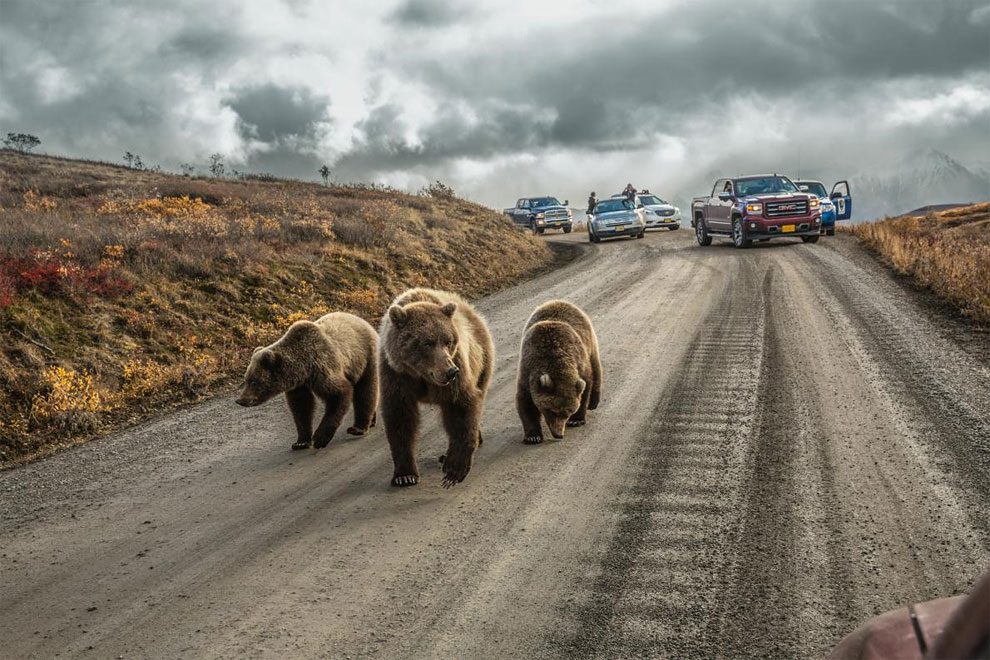
In Alaska, a mother grizzly and her cubs cause a “bear jam” on Denali’s 92-mile-long Park Road, open to private vehicles only five days each summer. Photograph by Aaron Huey
More info: National Geographic (h/t: photogrist)
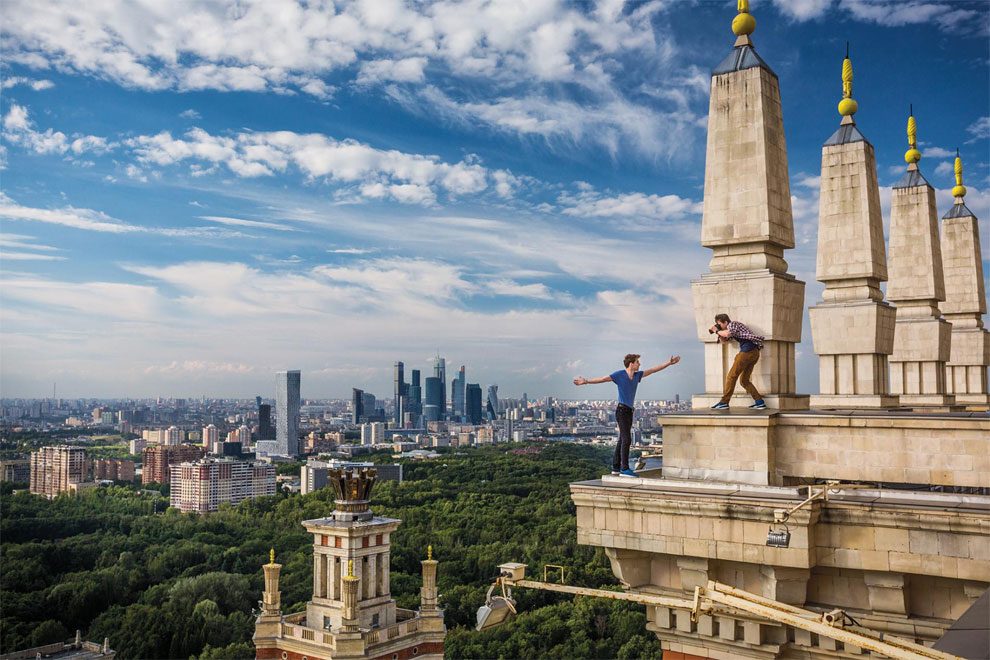
Kirill Vselensky perches on a cornice in Moscow as Dima Balashov gets the shot. The 24-year-olds, risktakers known as rooftoppers, celebrate their feats on Instagram. Photograph by Gerd Ludwig
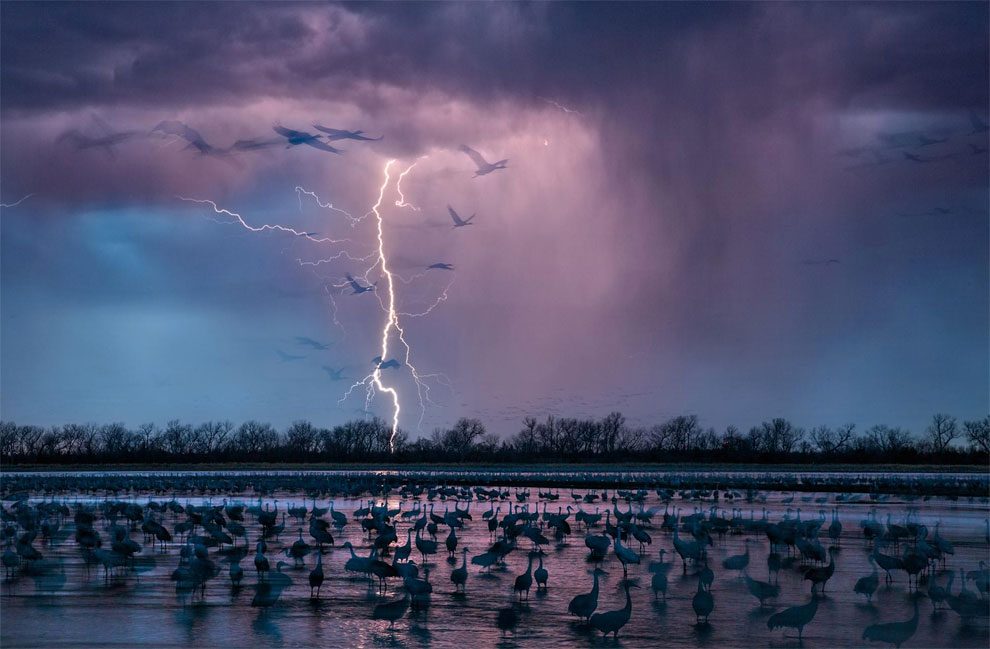
As an evening storm lights up the sky near Wood River, Nebraska, about 413,000 sandhill cranes arrive to roost in the shallows of the Platte River. Photograph by Randy Olson
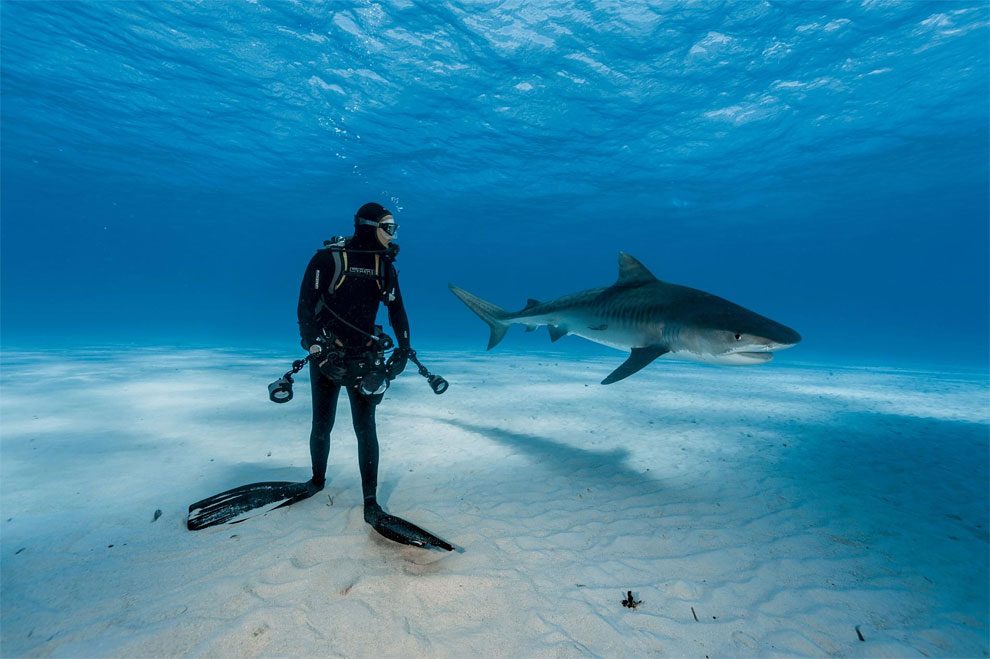
A diver keeps a close watch on a tiger shark in the Bahamas. But the scene may not be as dangerous as it looks: Tigers rely on surprise to hunt prey and are unlikely to attack divers who keep them in sight. Photograph by Brian Skerry
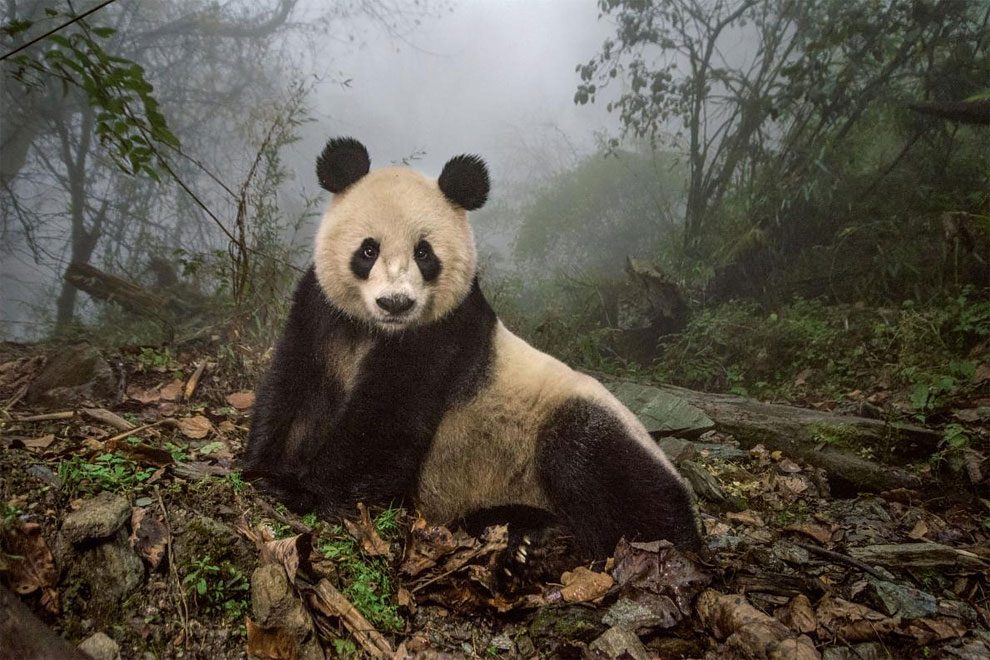
Ye Ye, a 16-year-old giant panda, lounges in a wild enclosure at a conservation center in China’s Wolong Nature Reserve. Photograph by Ami Vitale

Eye-care workers use test-lens frames to conduct eye exams in India’s Sundarbans region. Their goal: to help reduce India’s blind population of more than eight million. Photograph by Brent Stirton
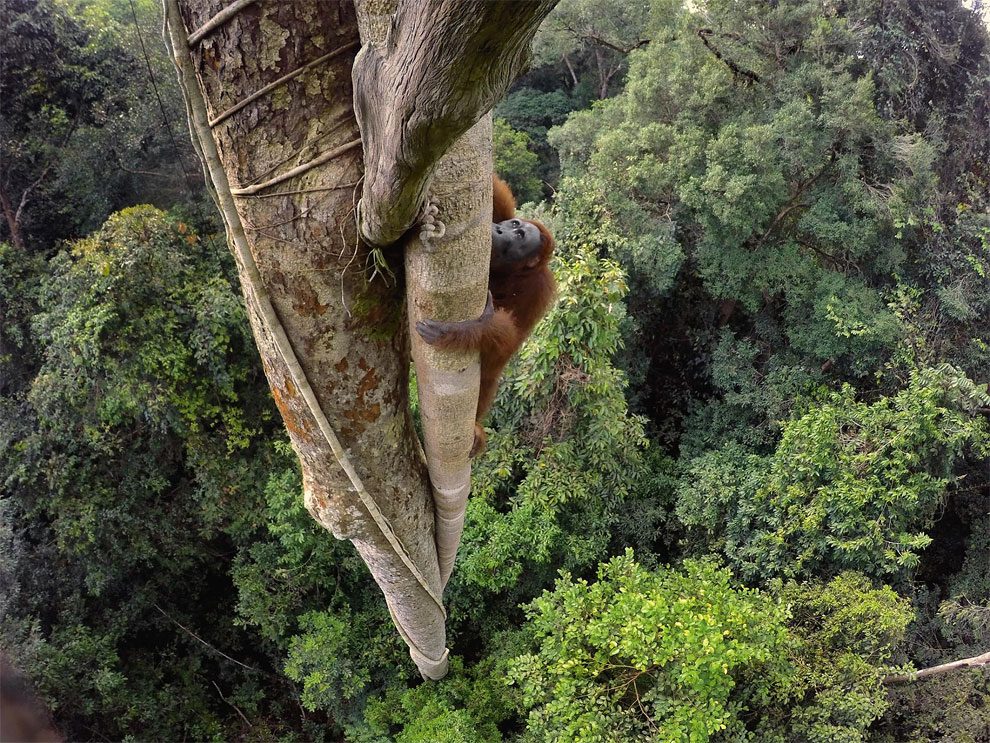
Tempted by the fruit of a strangler fig, a Bornean orangutan climbs 100 feet into the canopy. With males weighing as much as 200 pounds, orangutans are the world’s largest tree-dwelling animals. Photograph by Tim Laman
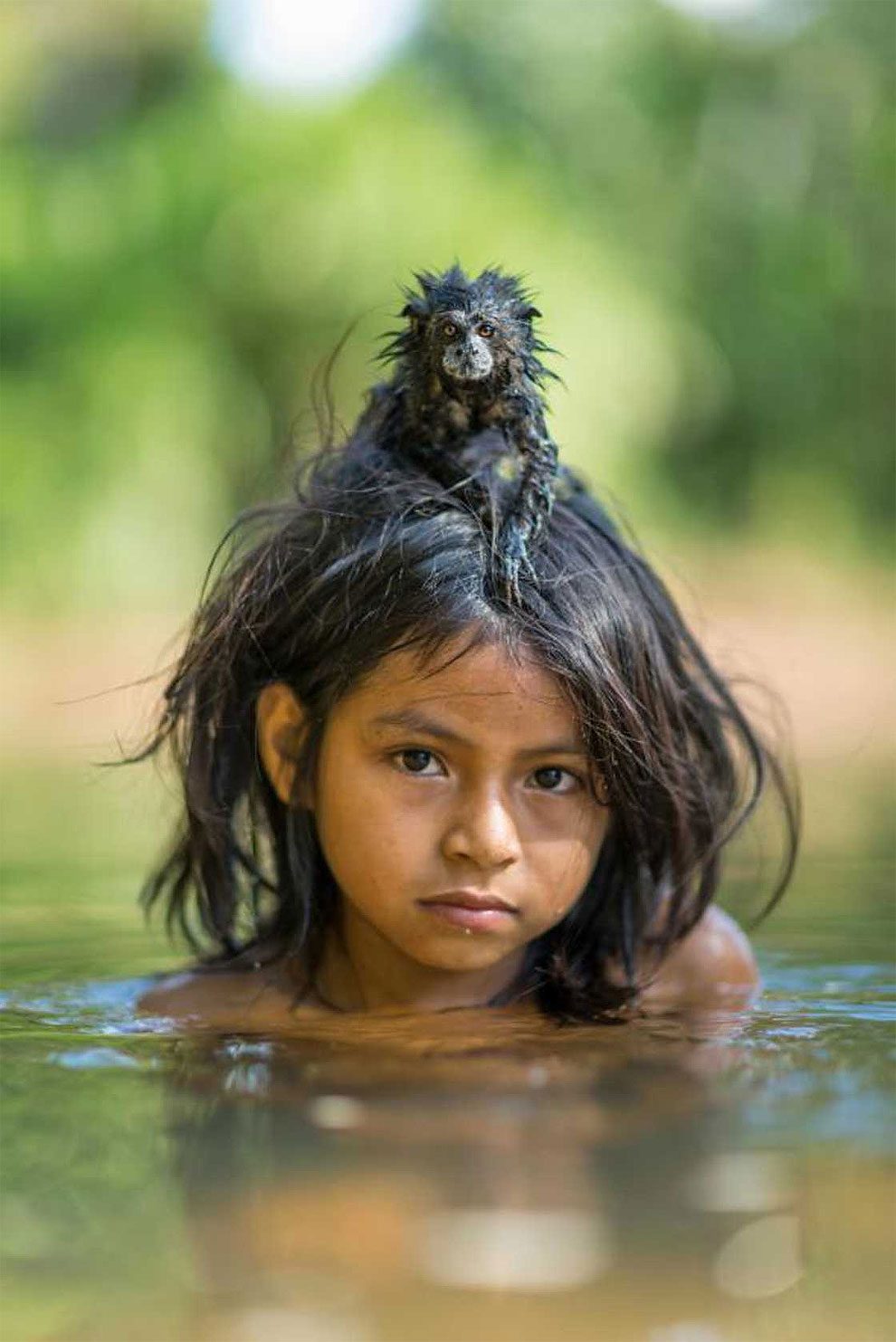
A pet saddleback tamarin hangs on to Yoina Mameria Nontsotega as the Matsigenka girl takes a dip in the Yomibato River, deep inside Peru’s Manú National Park. Photograph by Charlie Hamilton James
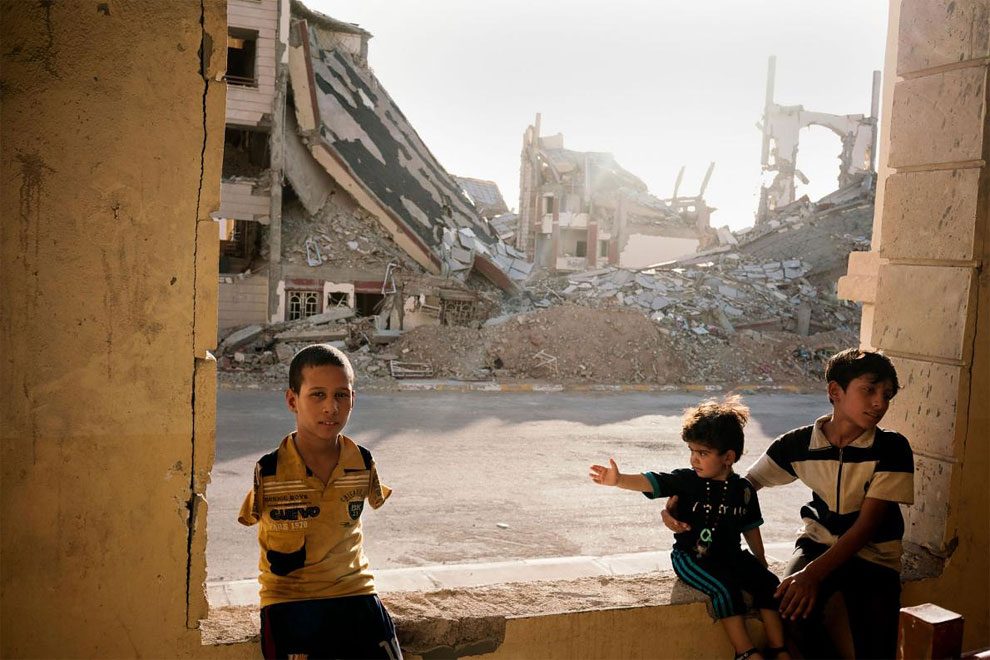
A refugee family lives amid the rubble in Ramadi, an Iraqi city leveled by ISIS’s destruction and bloodshed. Photograph by Moises Saman
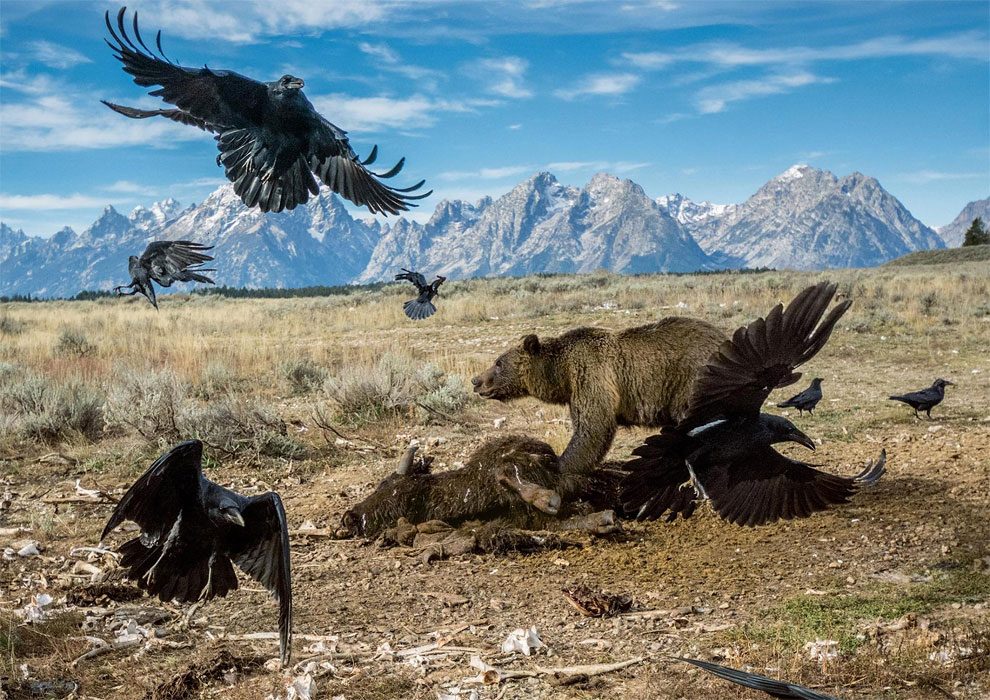
Parts of the Yellowstone region are wilder now than they’ve been in a century. Grizzlies are spreading. This one, in Grand Teton National Park, fends off ravens from a bison carcass. Workers moved it away from the road to keep scavengers and tourists apart. Photograph by Charlie Hamilton James

Twilight bathes the sanctuary of Athena Pronaia at Delphi. Pilgrims in ancient Greece may have offered sacrifices here before consulting the oracle of Delphi. Photograph by Vincent J. Musi
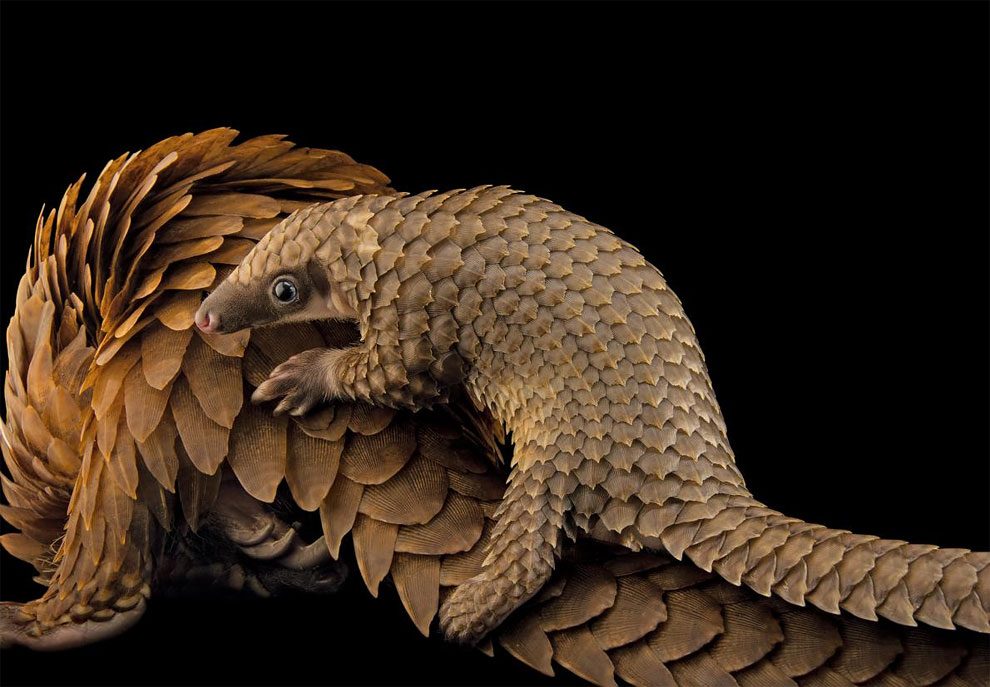
A baby African white-bellied tree pangolin hitches a ride on its mother at Pangolin Conservation, a nonprofit organization in St. Augustine, Florida. Photograph by Joel Sartore
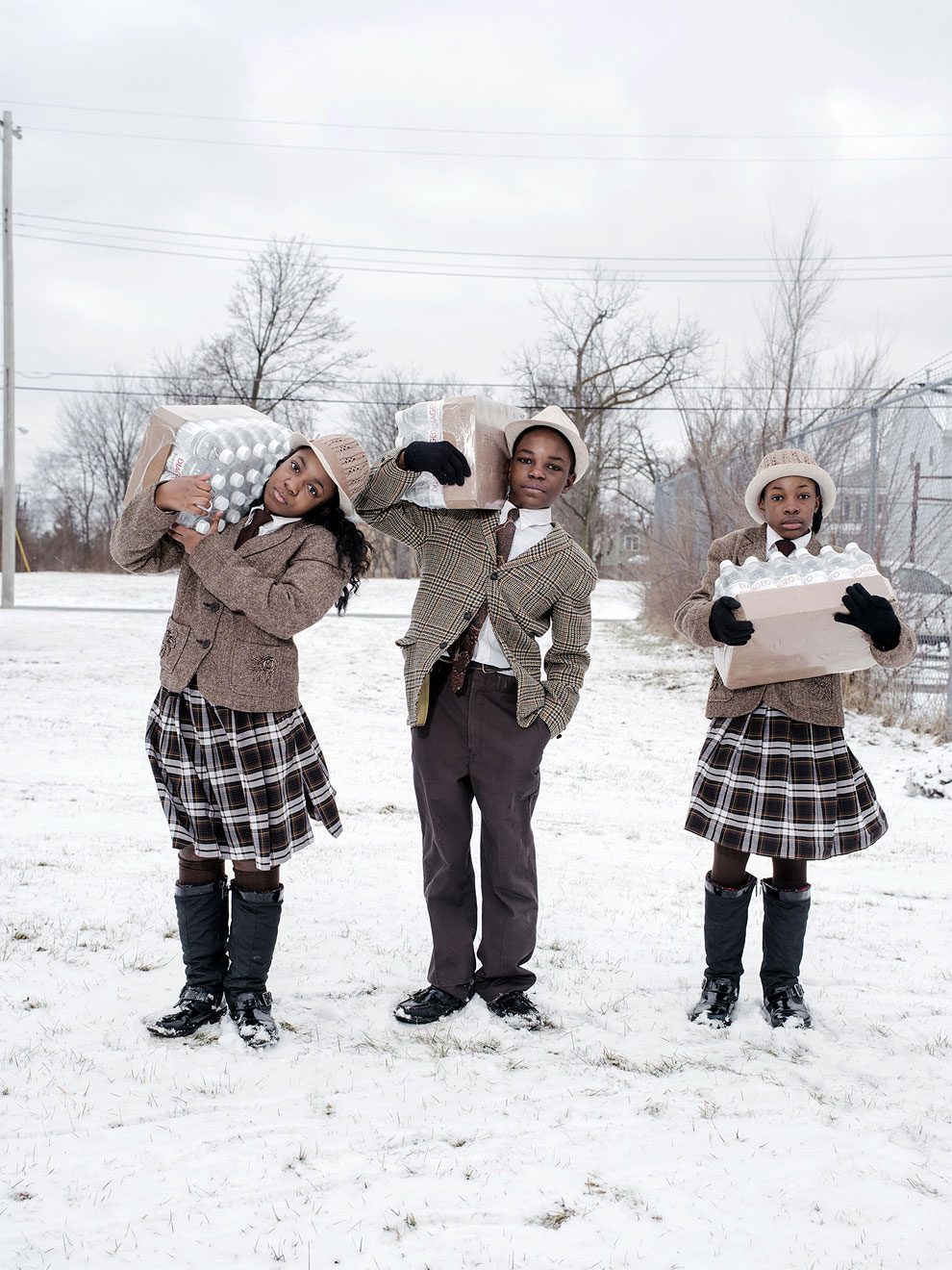
In Flint, Michigan, siblings Julie, Antonio, and India Abram collect their daily allowance of bottled water from Fire Station #3, their local water resource site. Photograph by Wayne Lawrence
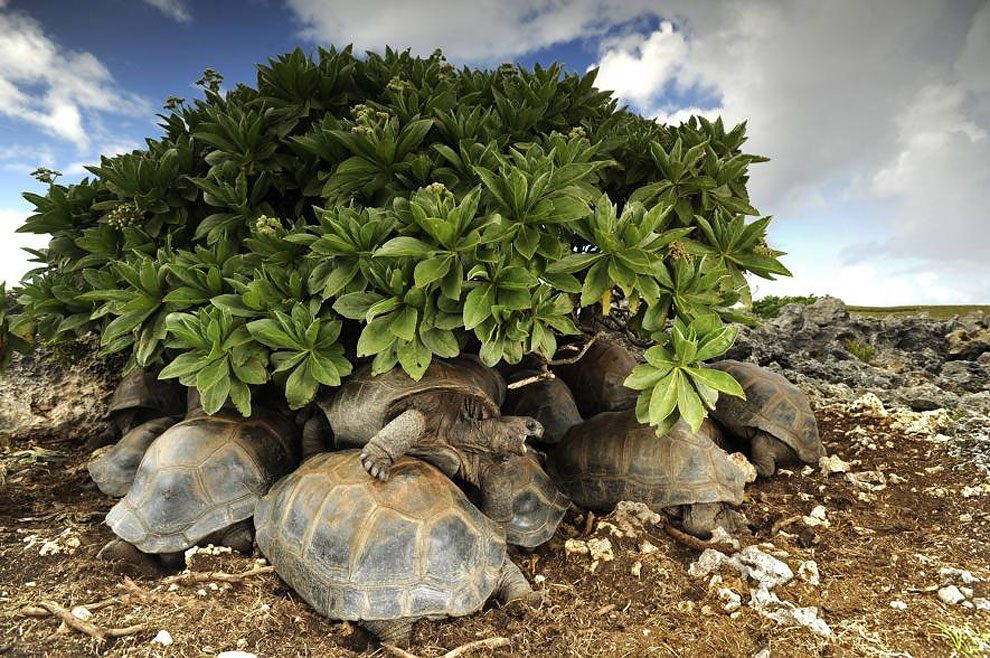
Tortoises jockey for shelter from the sun. They will cook in their shells if they remain in the heat for too long. Photograph by Thomas Peschak
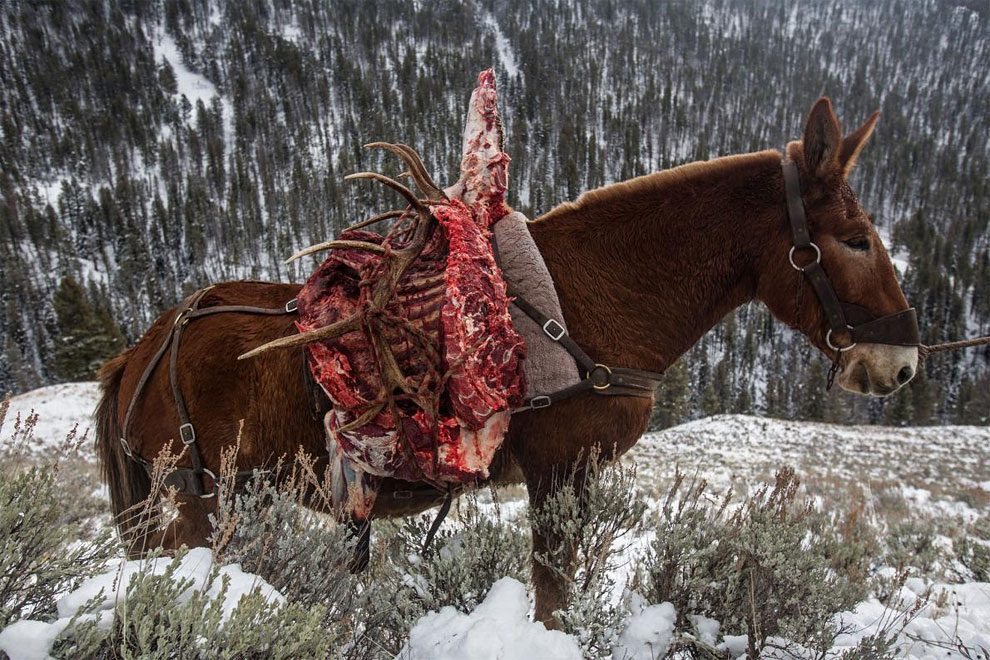
A harvested bull elk and its prized antlers are transported the old-fashioned way—by mule. More than 72,000 hunters came to the lands around Yellowstone and Grand Teton in 2014. Photograph by David Guttenfelder
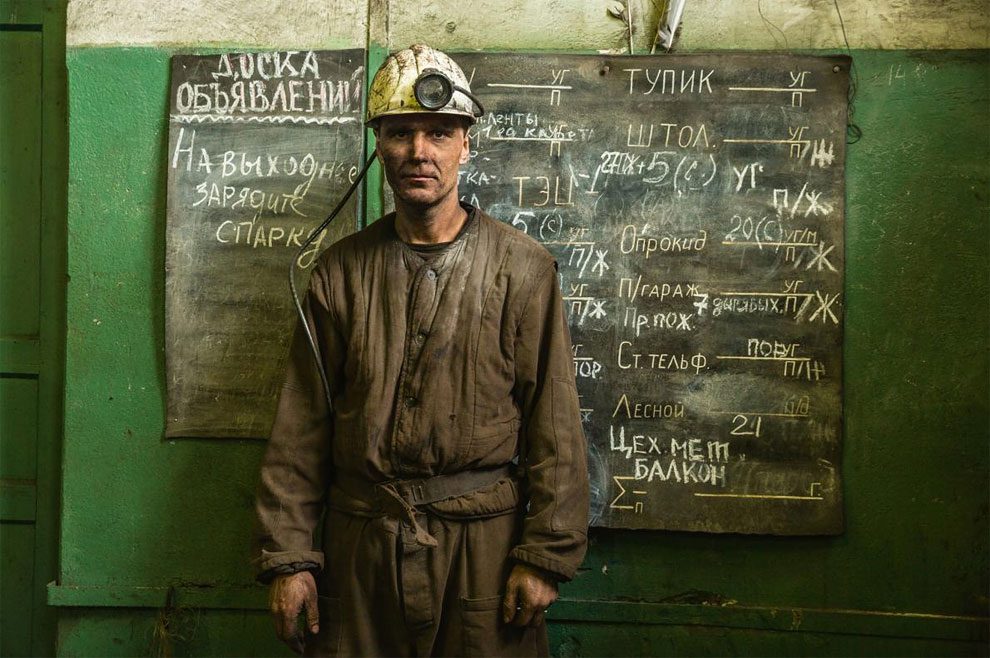
Igor Voronkin surfaces at the Barentsburg coal mine on Spitsbergen, in Norway’s Svalbard archipelago. Like most of the 400 other miners, he’s from eastern Ukraine. Photograph by Evgenia Arbugaeva
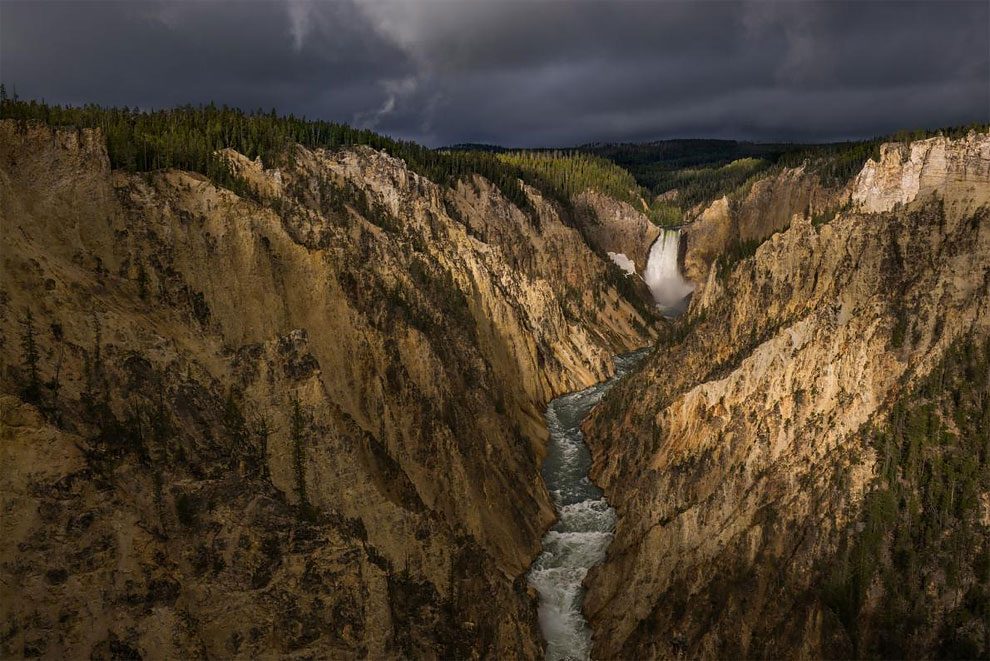
Photographs and paintings of sights such as this—the Grand Canyon of the Yellowstone— inspired Congress to create the park in 1872. It was a revolutionary step. Photograph by Michael Nichols
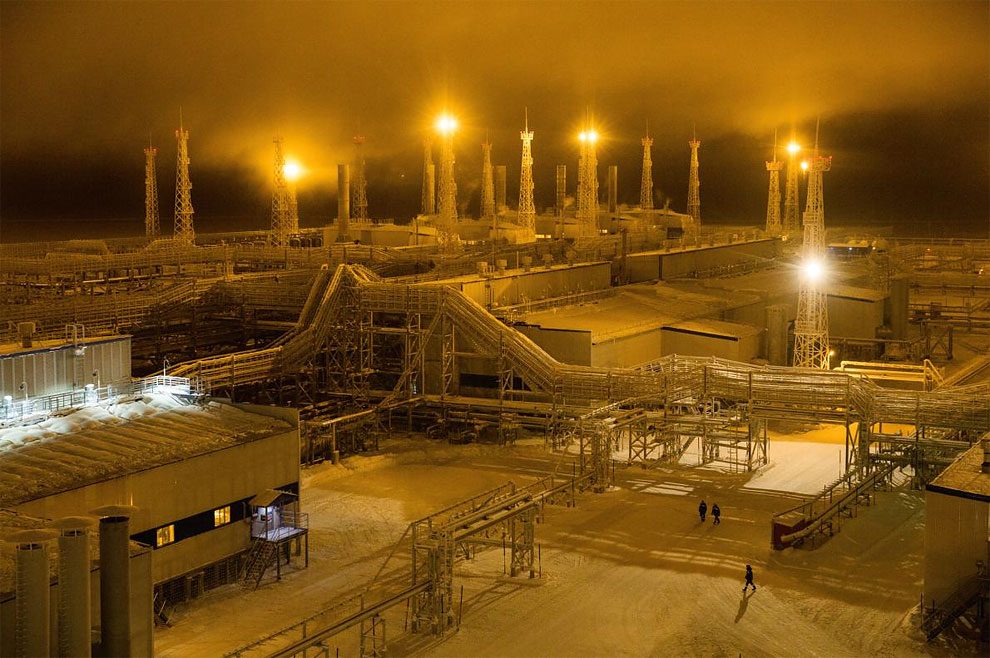
Russia’s Bovanenkovo natural gas field, on the Yamal Peninsula, was deemed too expensive to develop until President Vladimir Putin made it a priority. Photograph by Evgenia Arbugaeva
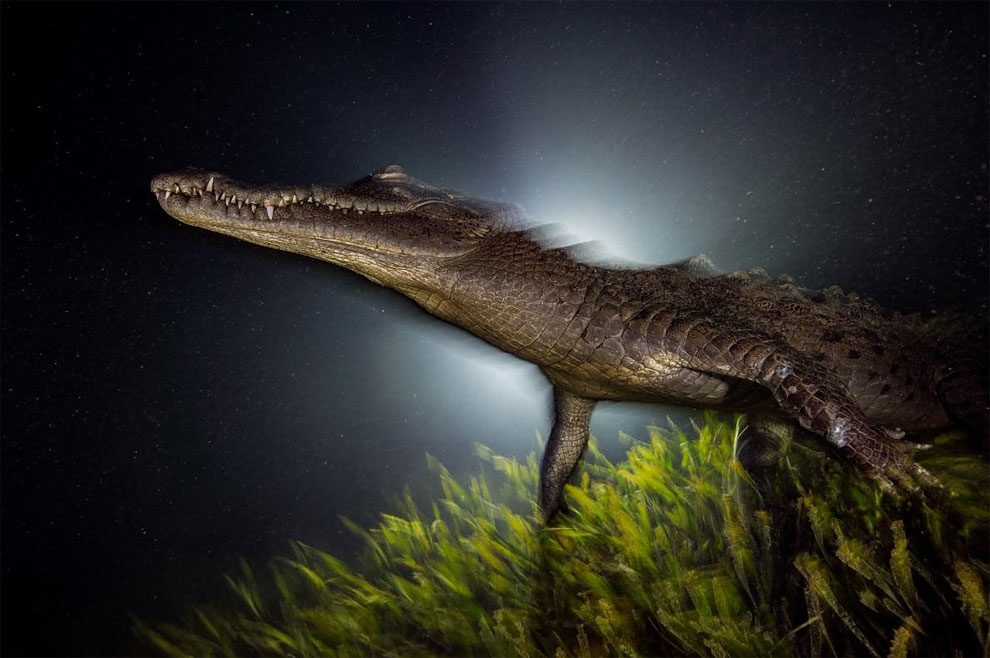
An American crocodile rises from a bed of turtle grass to return to the labyrinth of mangrove roots that offer near-impenetrable shelter. Photograph by David Doubilet and Jennifer Hayes
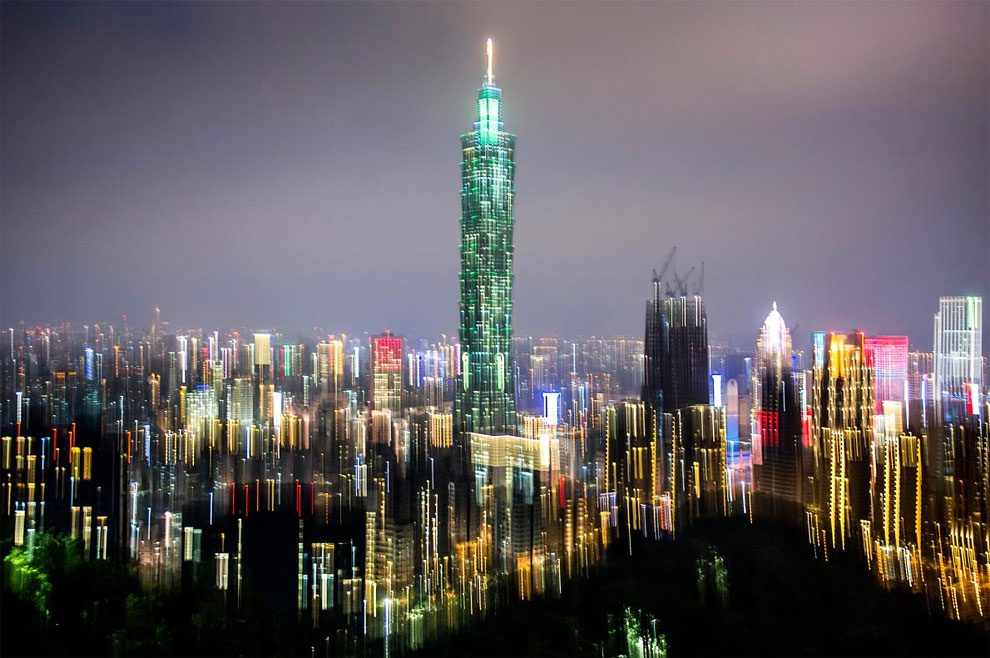
The capital of Taiwan, Taipei comes to vibrant life when the sun goes down. Photograph by Dina Litovsky
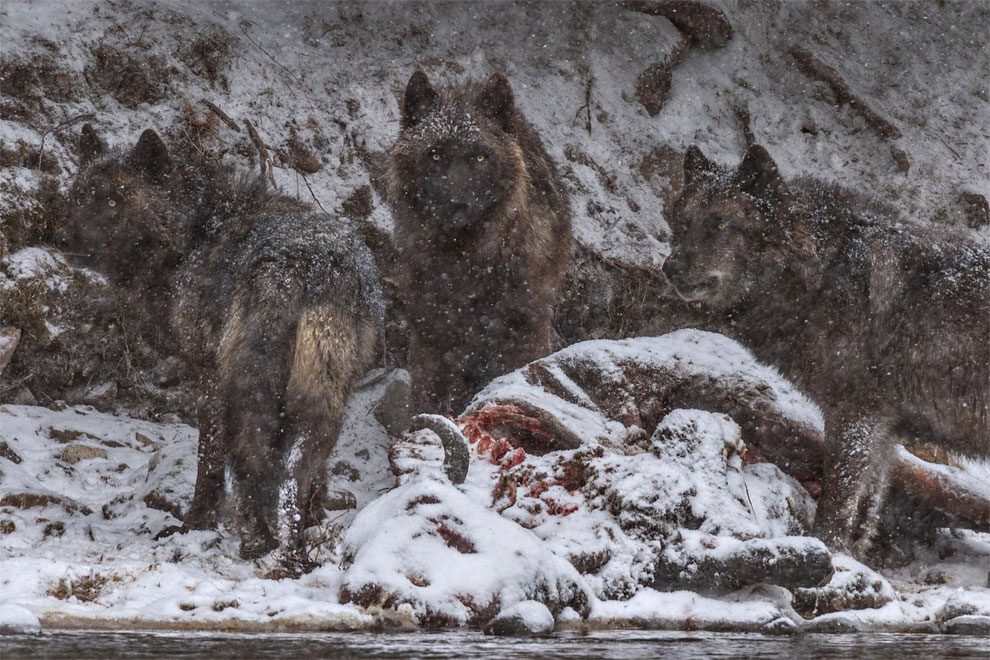
The carcass of a bison that drowned in the Yellowstone River became a feast for this wolf and her two-year-old offspring. Photograph by Ronan Donovan
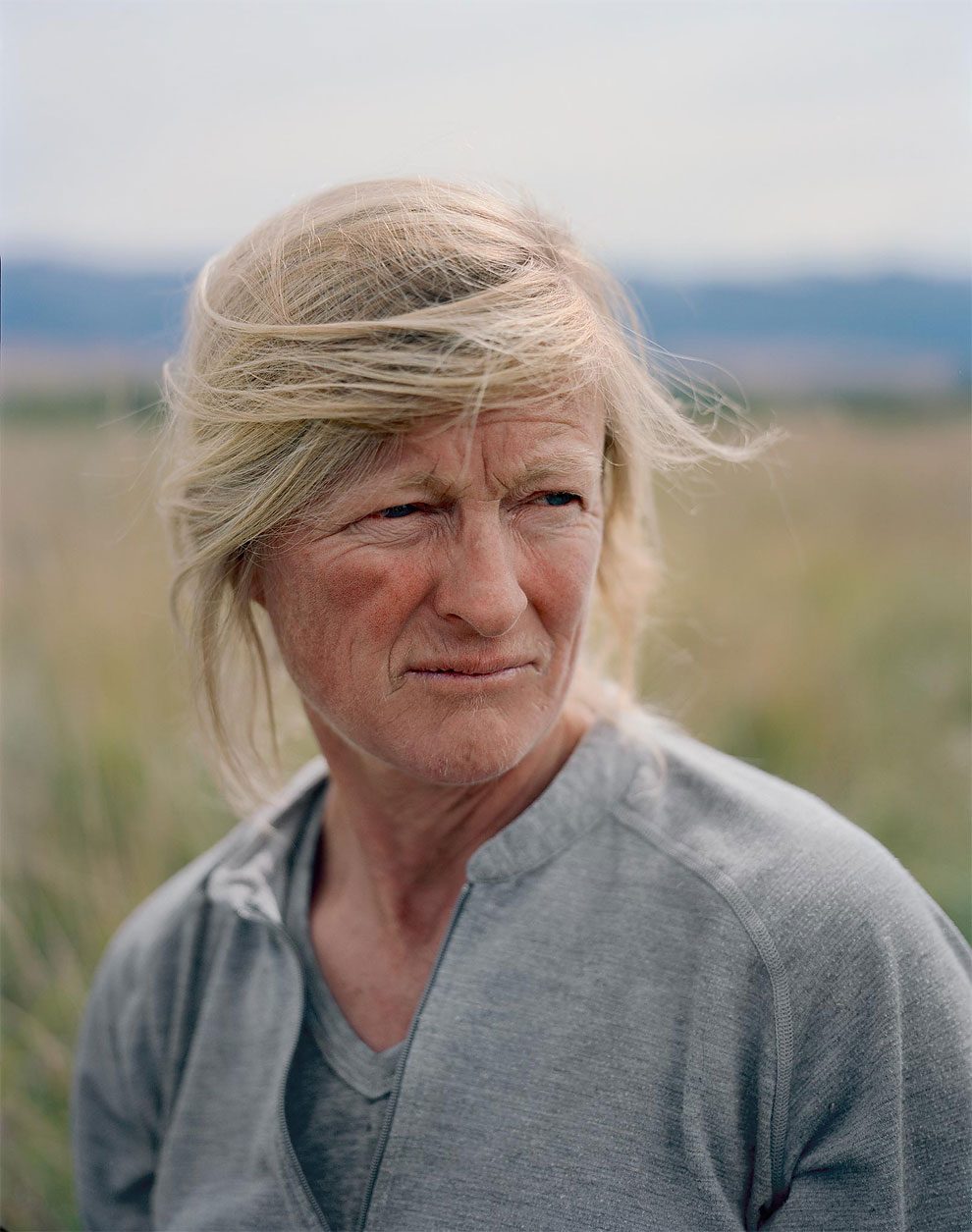
Becky Weed and her husband, David Tyler, raise sheep near Yellowstone National Park. They ranch with a guard dog to ward off coyotes, bears, and mountain lions. Photograph by Erika Larsen
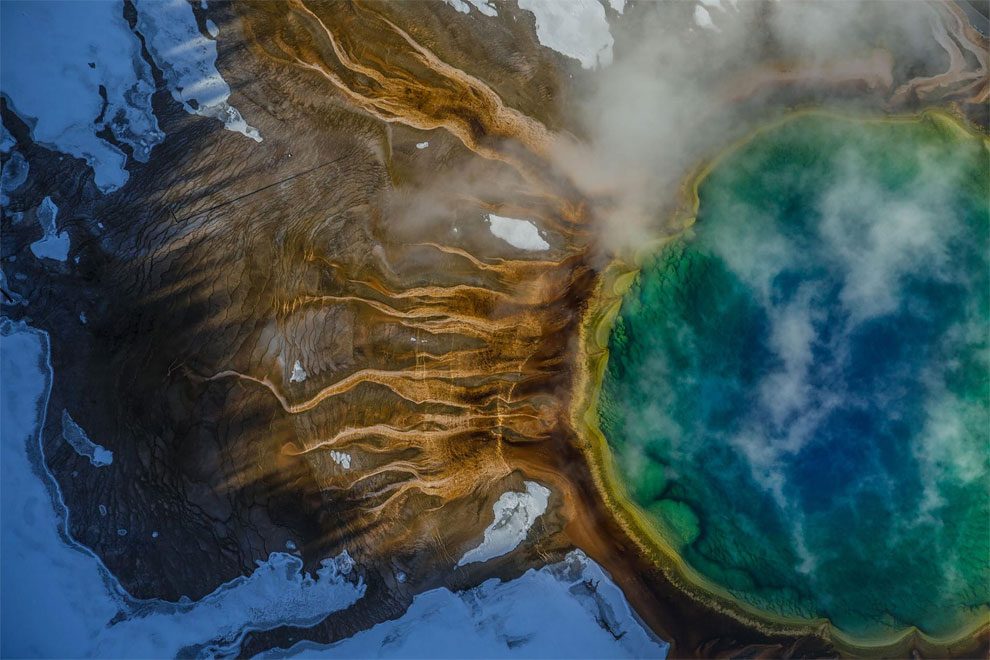
The colors of Grand Prismatic Spring in Yellowstone come from thermophiles: microbes that thrive in scalding water. Photograph by Michael Nichols

Steven Donovan, flipping into a pool, took a seasonal job at Glacier National Park to sharpen his photography skills. Photograph by Corey Arnold
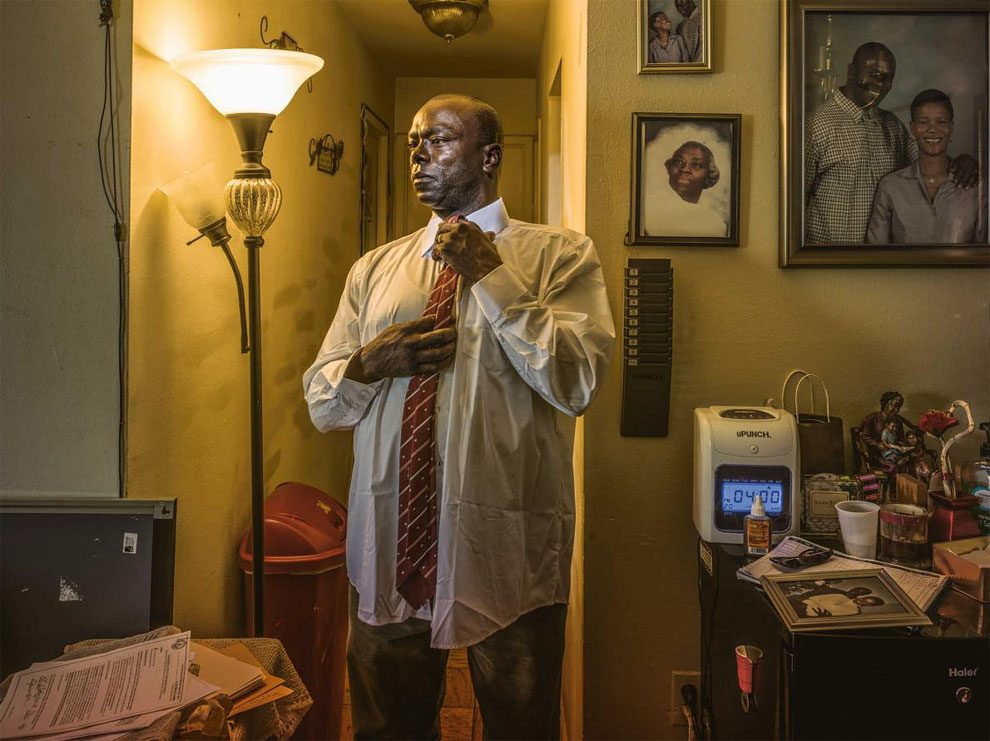
Kirk Odom was convicted of rape after an expert testified that a hair on the victim’s nightgown matched his. He spent years in prison before DNA tests proved his innocence. Photograph by Max Aguilera-Hellweg
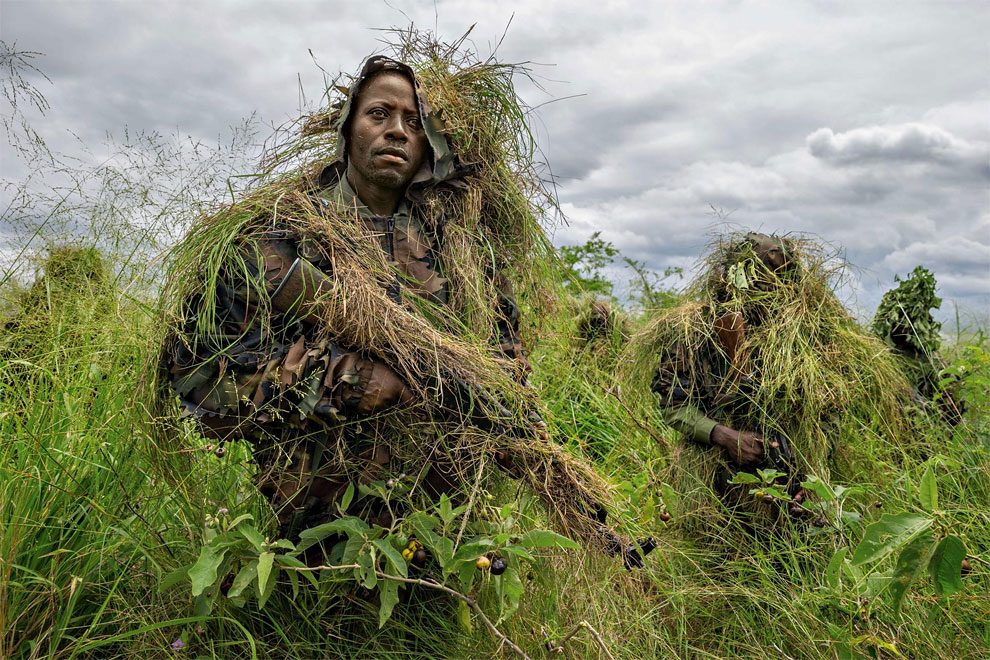
Virunga Park rangers in the Democratic Republic of the Congo undergo military-style training, including ambush tactics, due to the constant threat from armed groups. Photograph by Brent Stirton
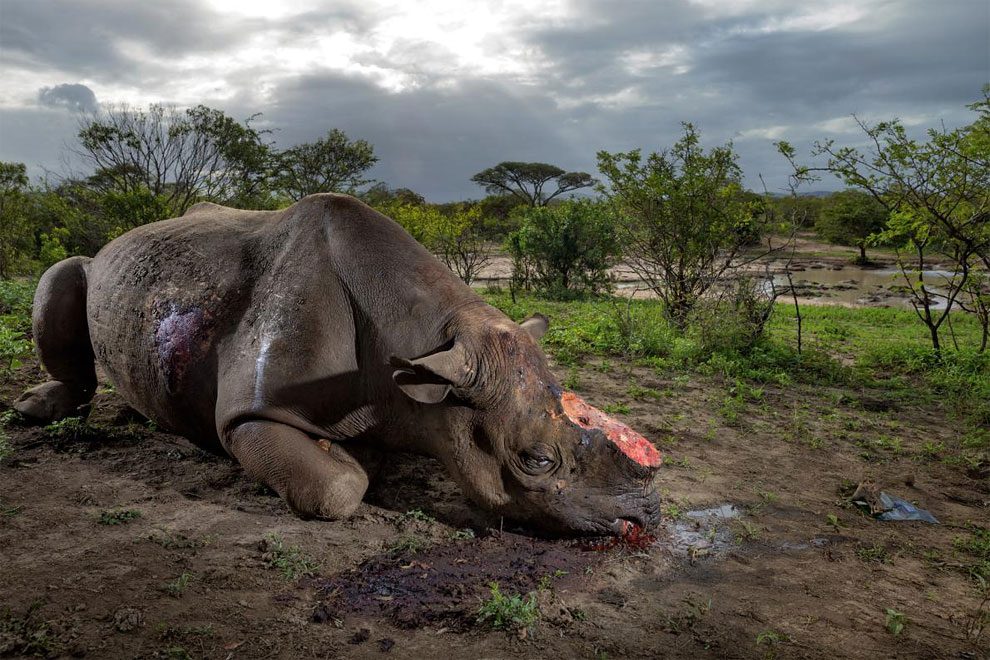
Poachers killed this black rhinoceros for its horn with high-caliber bullets in South Africa’s Hluhluwe-Imfolozi Park. Black rhinos number only about 5,000 today. Photograph by Brent Stirton
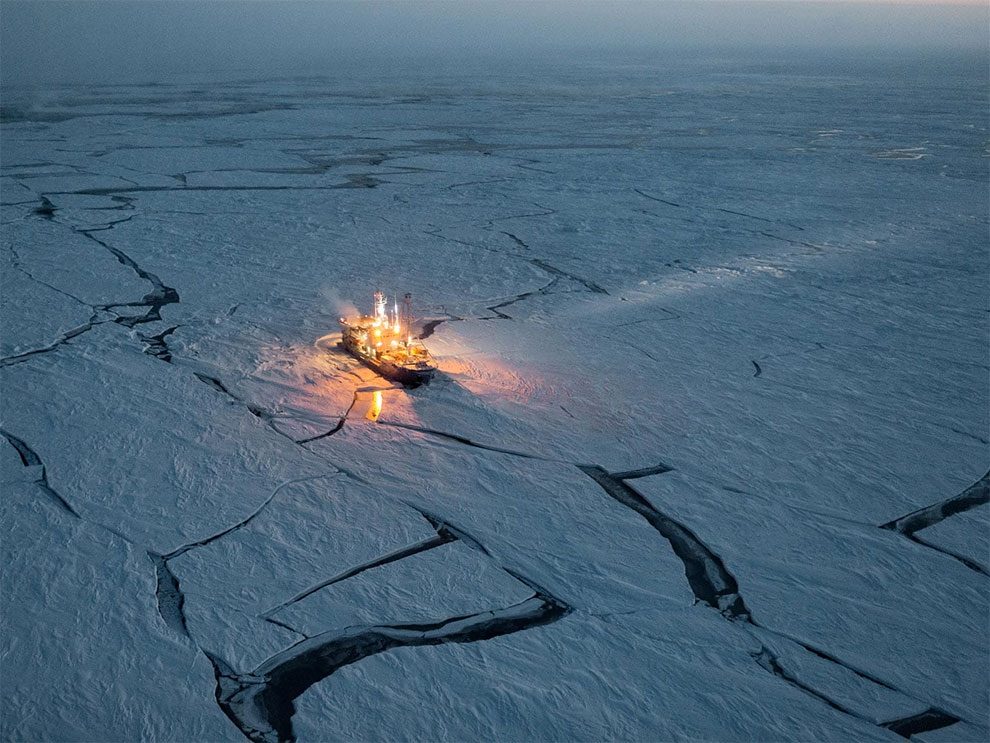
To track changes in sea ice, the Norwegian research vessel Lance drifted along with it for five months in 2015, on a rare voyage from Arctic winter into spring. Photograph by Nick Cobbing
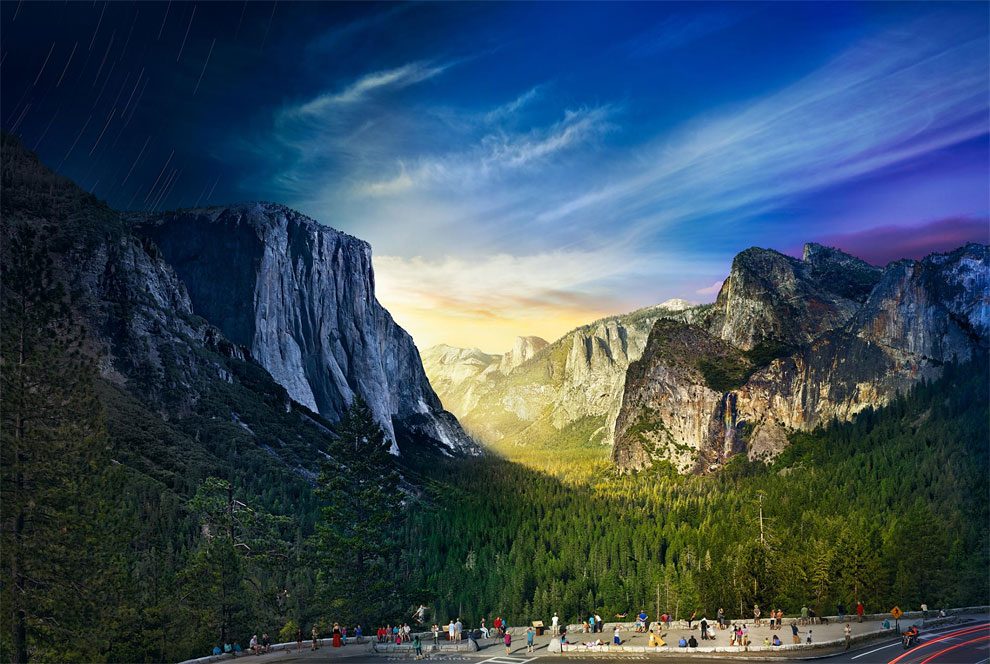
On a mountainside in Yosemite National Park, photographer Stephen Wilkes took 1,036 images over 26 hours to create this day-to-night composite. Photograph by Stephen Wilkes
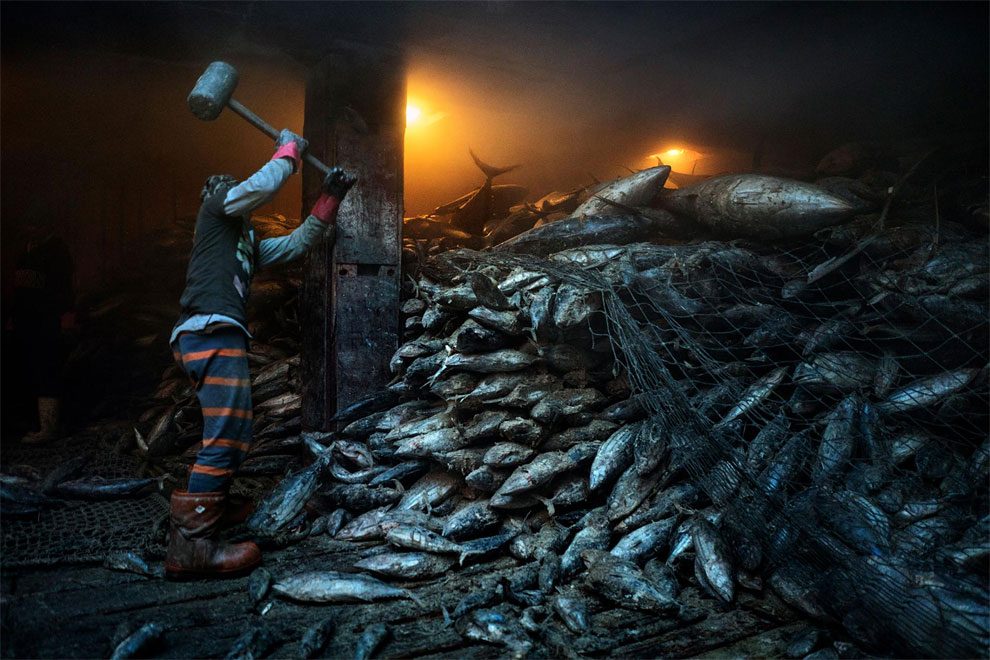
A worker uses a mallet to dislodge frozen tuna aboard a Chinese cargo vessel docked at the city of General Santos, in the Philippines. Photograph by Adam Dean
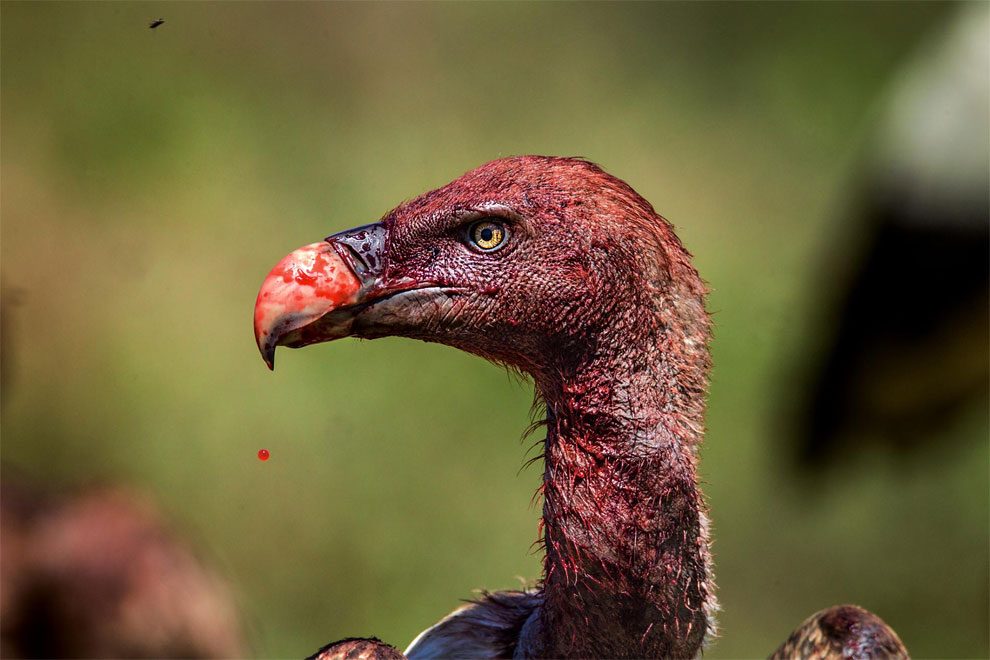
Blood drips from a Rüppell’s vulture’s beak. The neck and head are sparsely feathered, which helps keep gore, guts, and fecal matter from clinging in a deep carcass dive. Photograph by Charlie Hamilton James
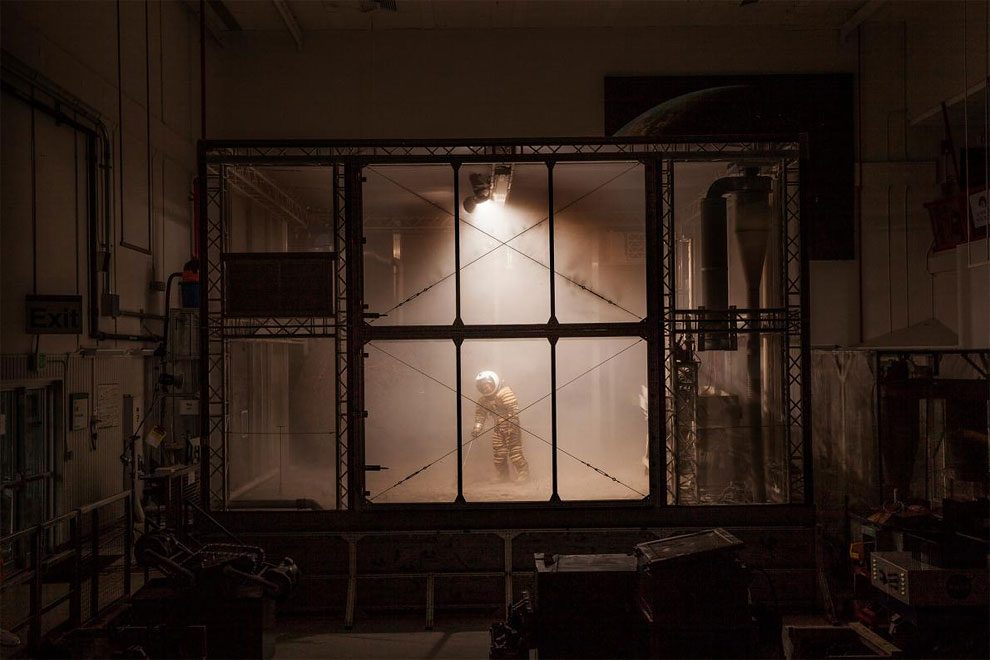
Dressed for Mars, space engineer Pablo de León tests a prototype space suit at NASA’s Kennedy Space Center, where fine soil and fans simulate conditions on the red planet. Photograph by Phillip Toledano
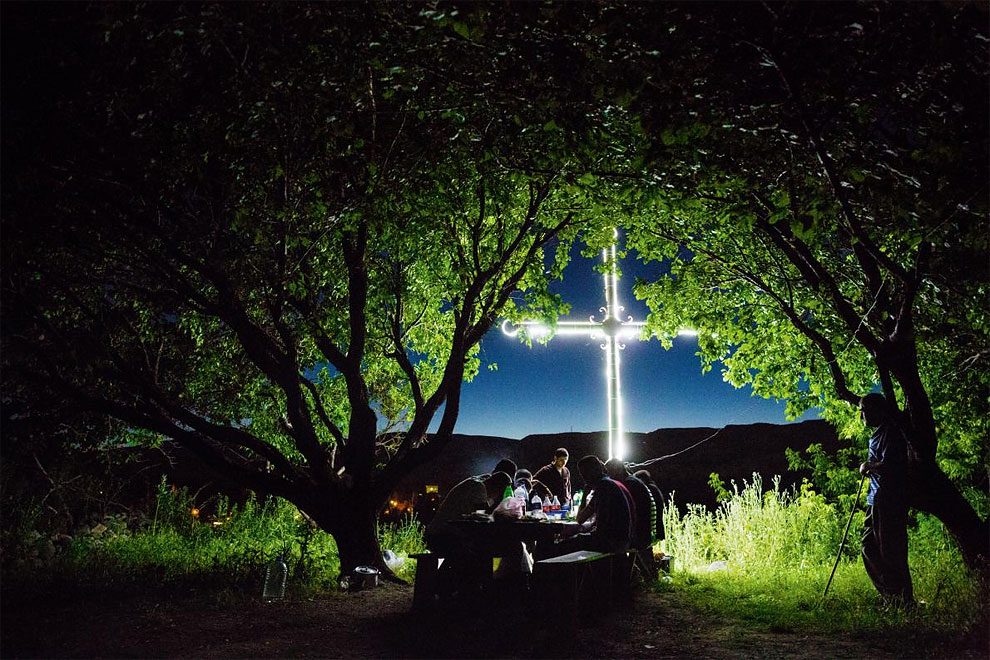
Villagers in Bagaran, Armenia, sing of cultural endurance and survival while picnicking at night beneath apricot trees—and a giant cross that shines defiantly into Turkey. Photograph by John Stanmeyer
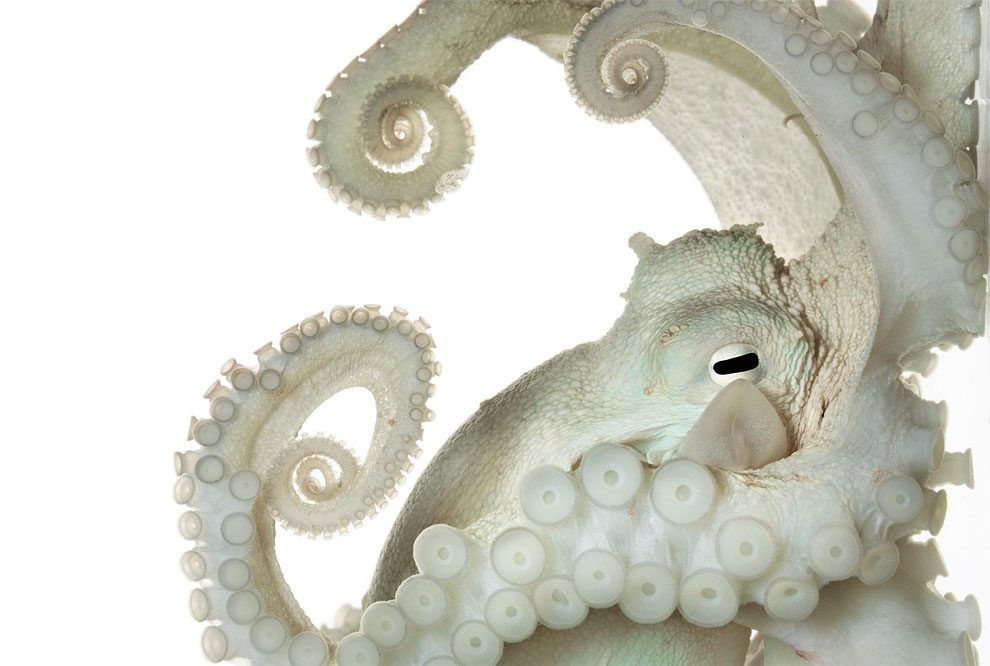
The nervous system of this common octopus is larger and more complex than most invertebrates’. Can it think? Is it conscious? Researchers wonder if we’ll ever know. Photographed by David Liittschwager

A curiosity, a portent, a looming symbol of the impending change: This May, for the first time in nearly four decades, an American cruise ship sailed into Havana Bay. Photograph by David Guttenfelder
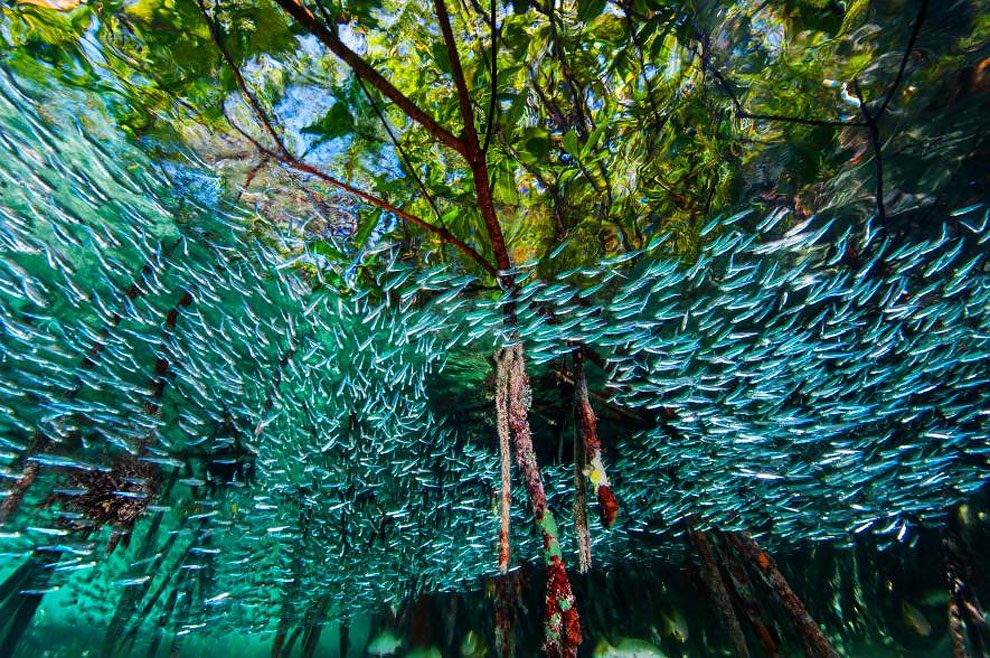
Silversides swirl through mangroves in the coral reefs off Cuba. The finger-size fish form large schools to try to confuse predators. Photograph by David Doubilet and Jennifer Hayes
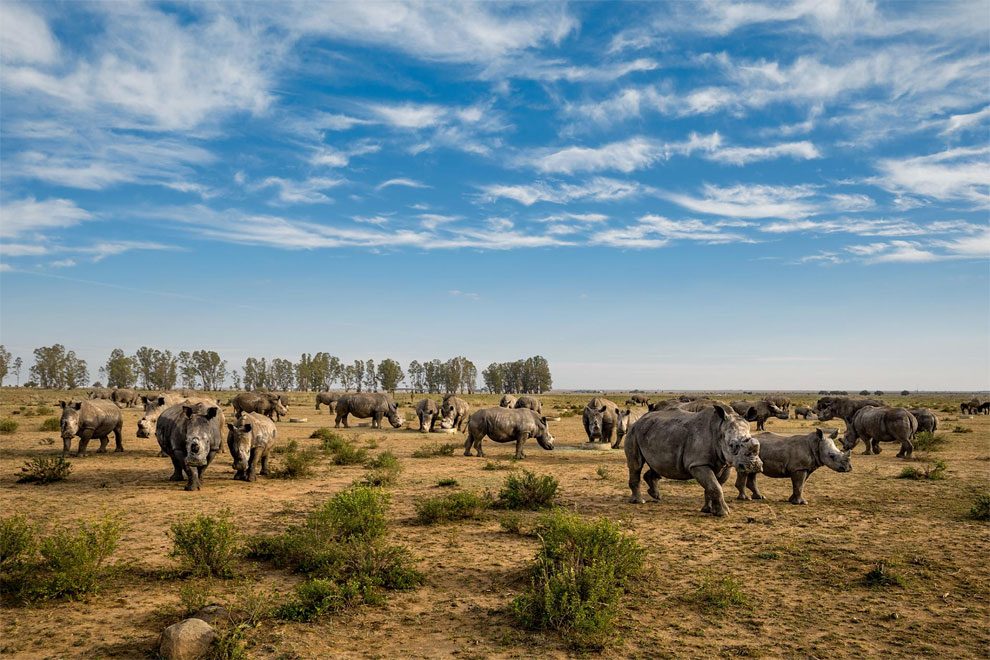
These rhinos on a South African ranch have recently had their horns trimmed. Unlike elephant ivory, rhino horn grows back when cut properly. The rancher is stockpiling the horn in hopes that selling it will soon be legal. Photograph by Brent Stirton
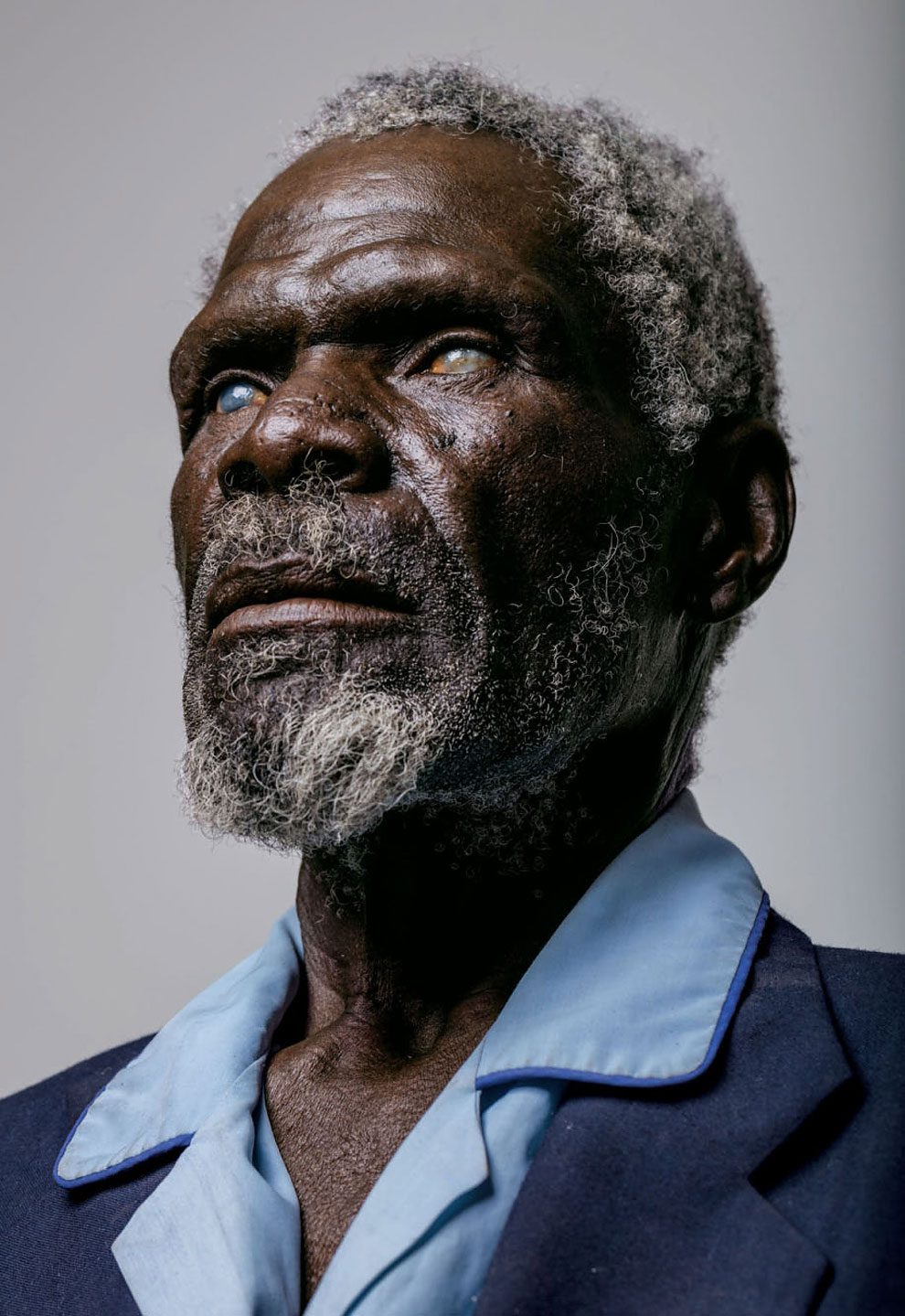
Gerd Gamanab, 67, sought treatment too late: Years of labor in the Namibian sun and dust destroyed his corneas. His blindness likely could have been prevented. Photograph by Brent Stirton
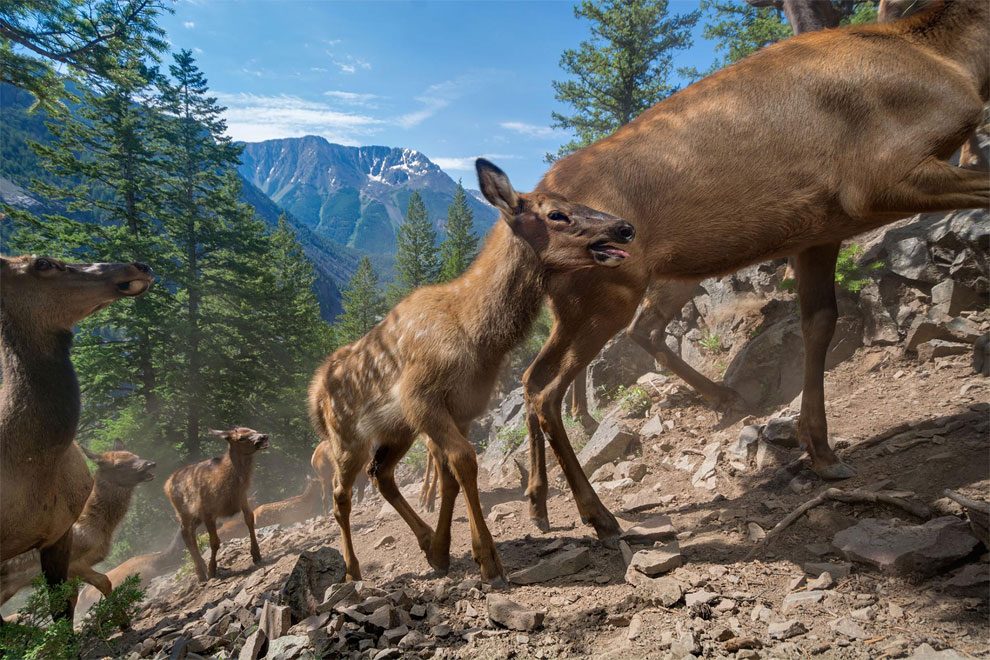
On their first migration to their summer range in southeastern Yellowstone, three-week-old calves of the Cody elk herd follow their mothers up a 4,600-foot slope. Photograph by Joe Riis
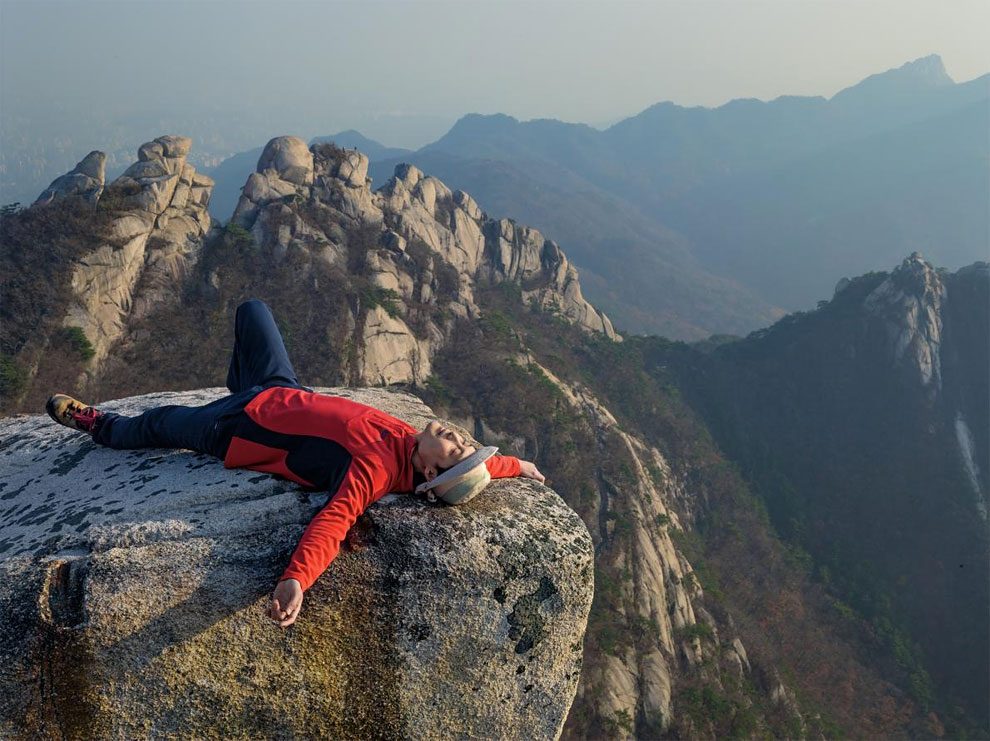
Within sight of downtown Seoul, South Korea’s capital and a hub of modern stressful life, salesman Sungvin Hong rests after a hike in Bukhansan National Park. Photograph by Lucas Foglia

Summer attracts sunbathers—clothed and otherwise—to the grassy banks of Munich’s Schwabinger Bach. The meadows here have been popular with nudists since the 1970s. Photograph by Simon Roberts
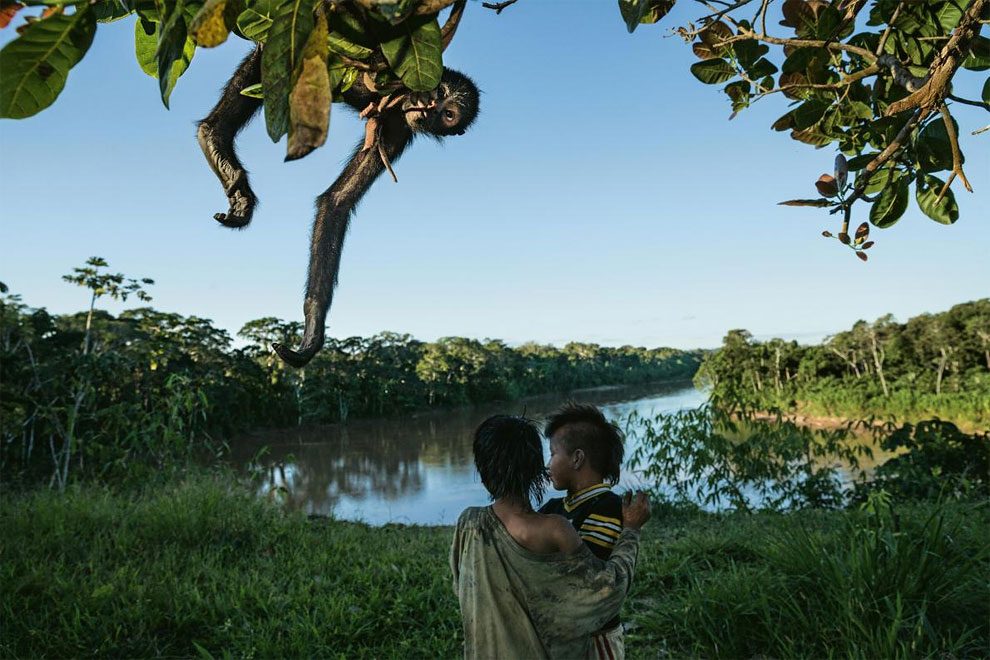
Indigenous people farm and hunt in Peru’s Manú forest but only for their own subsistence. Spider monkeys are a favorite quarry—and also favorite pets. Photograph by Charlie Hamilton James
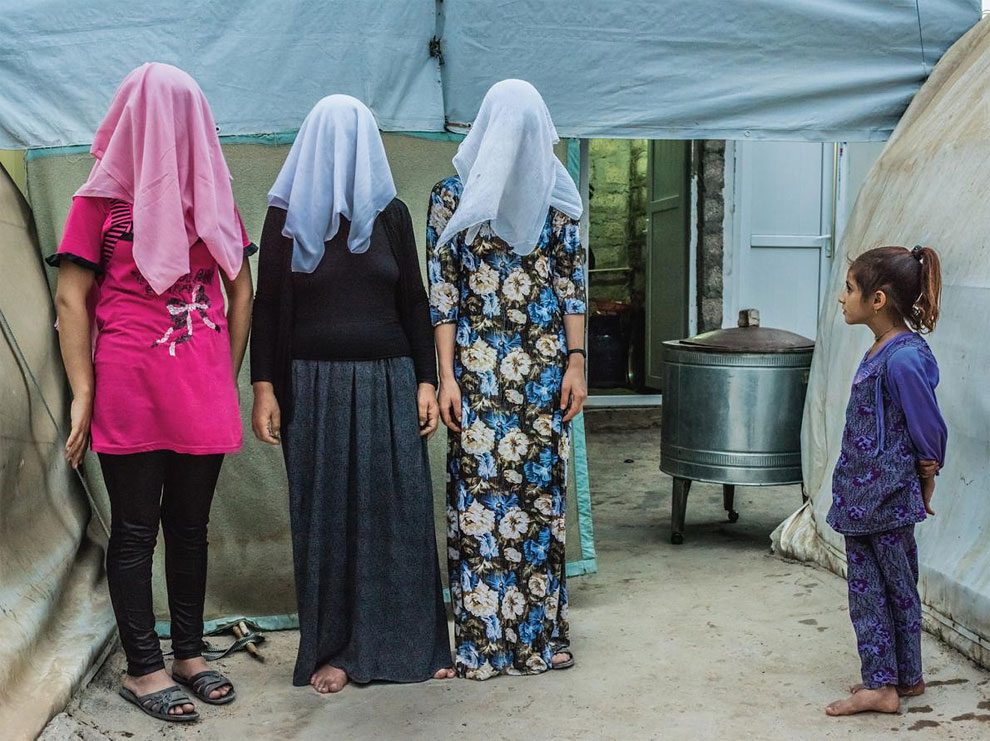
A girl watches as three Kurdish women are photographed with their faces hidden. Two of the women say they were forced to marry ISIS fighters before escaping to a refugee camp. Photograph by Yuri Kozyrev
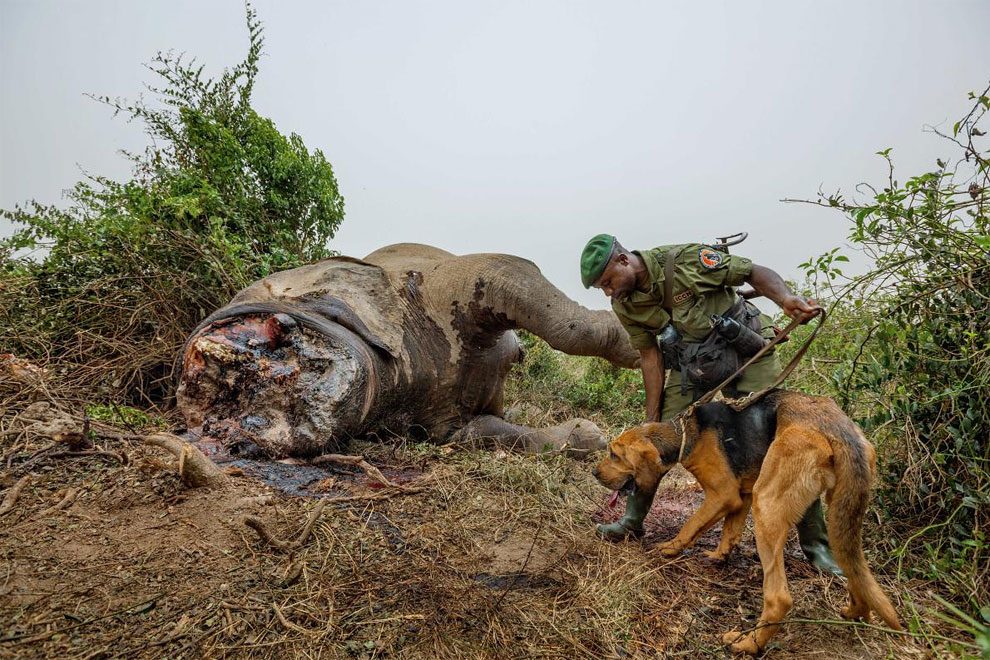
With the help of a bloodhound, a ranger tries to track the poachers who killed this elephant and cut off part of its head to get away quickly with its ivory tusks. Photograph by Brent Stirton
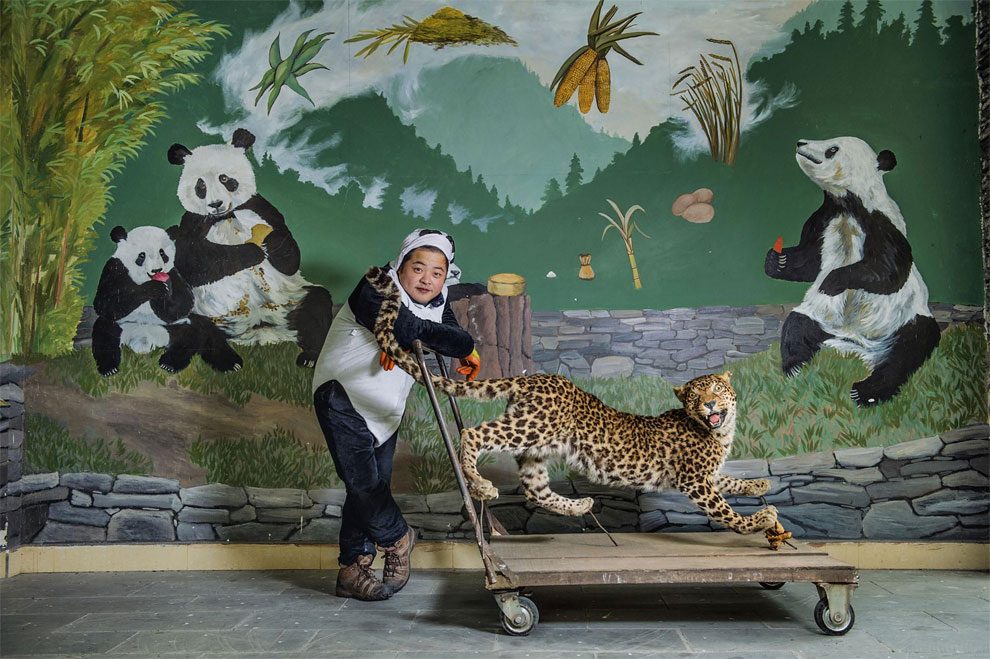
A panda keeper in China uses a stuffed leopard to train young pandas to fear their biggest wild foe. A cub’s reactions help determine if the bear is ready to survive on its own. Photograph by Ami Vitale
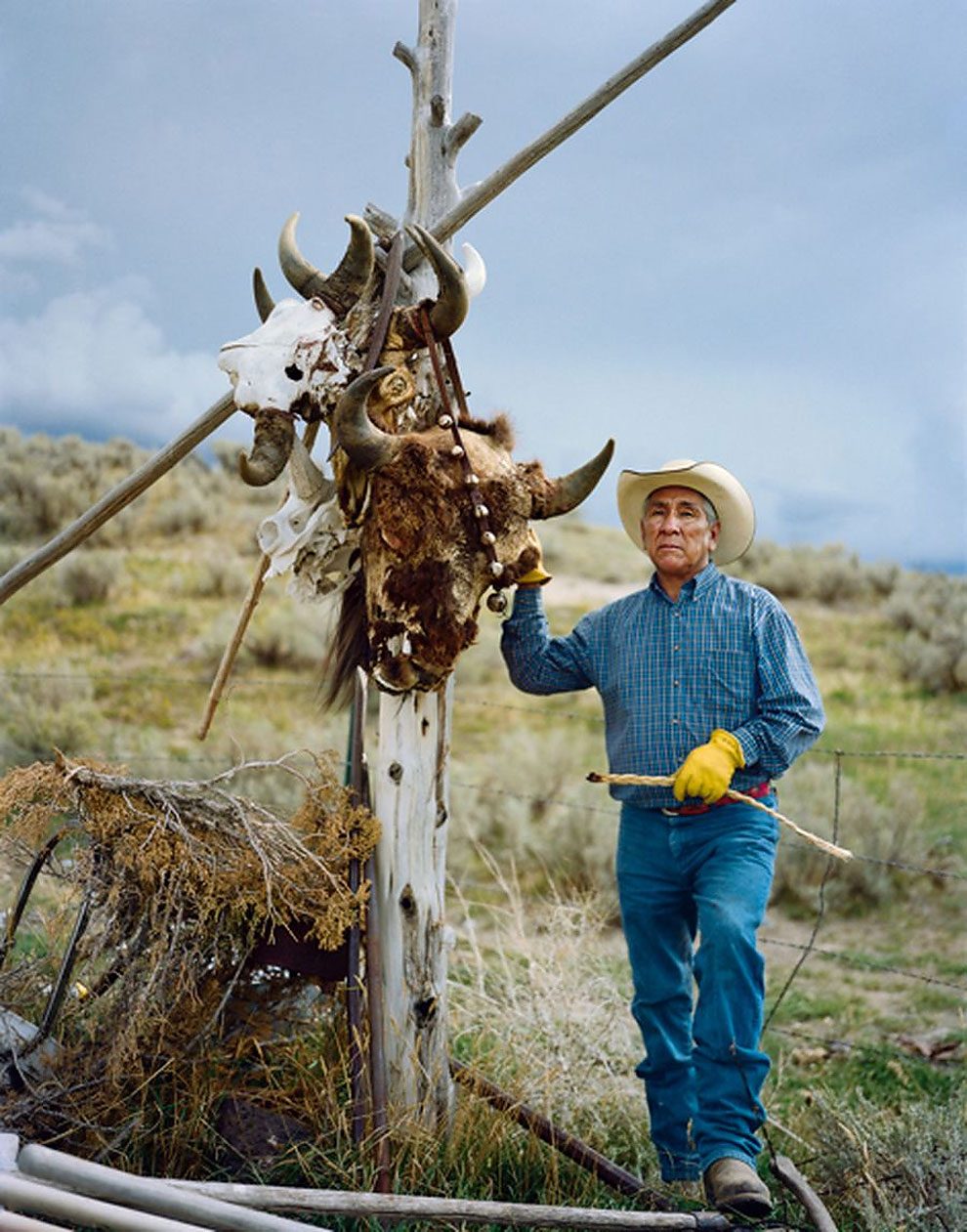
At Fort Hall, Idaho, Leo Teton stands next to a pole ornamented with bison skulls, representing the spiritual connection between the Shoshone-Bannock tribe and bison. Photograph by Erika Larsen
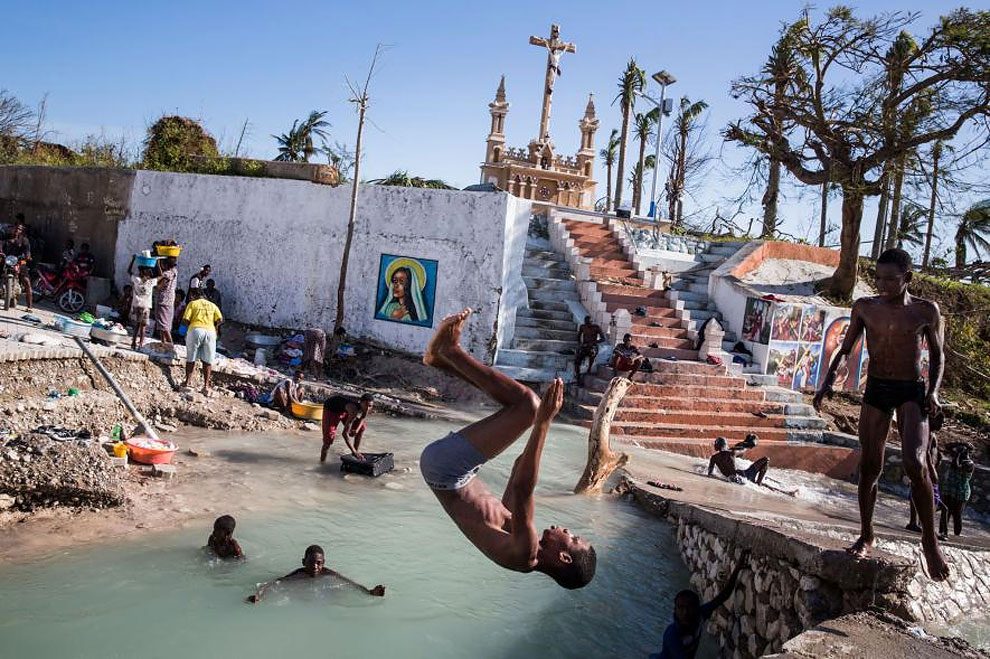
Kids swim in a river where a bridge collapsed in Port Salut, Haiti. The city suffered serious damage from Hurricane Matthew, with many homes completely destroyed. Photograph by Andrew McConnell
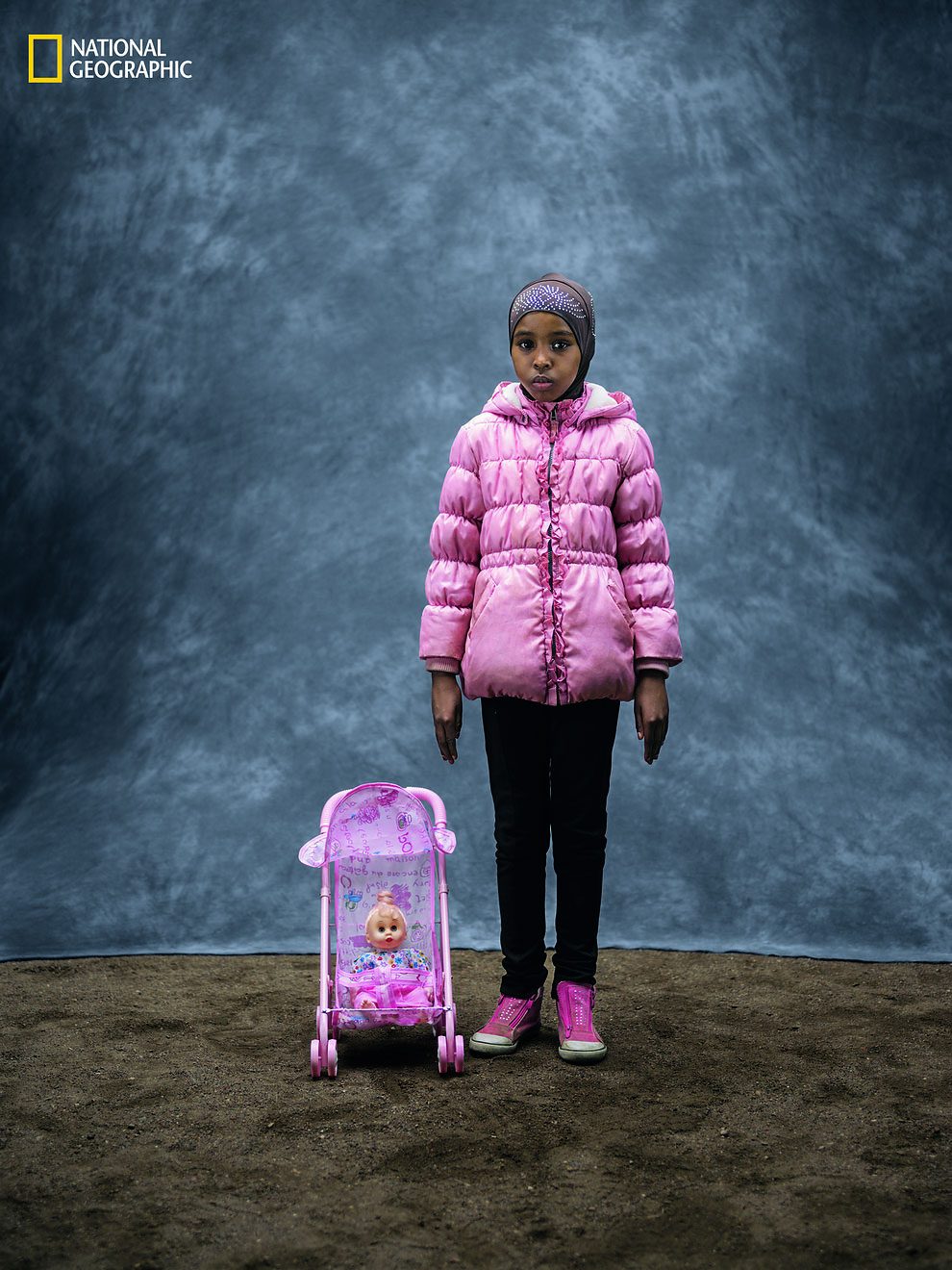
Isra Ali Saalad moved from Somalia to Sweden with her mother and two siblings. “The reason we came to this country is because it is safe,” says her sister, Samsam. Photograph by Robin Hammond
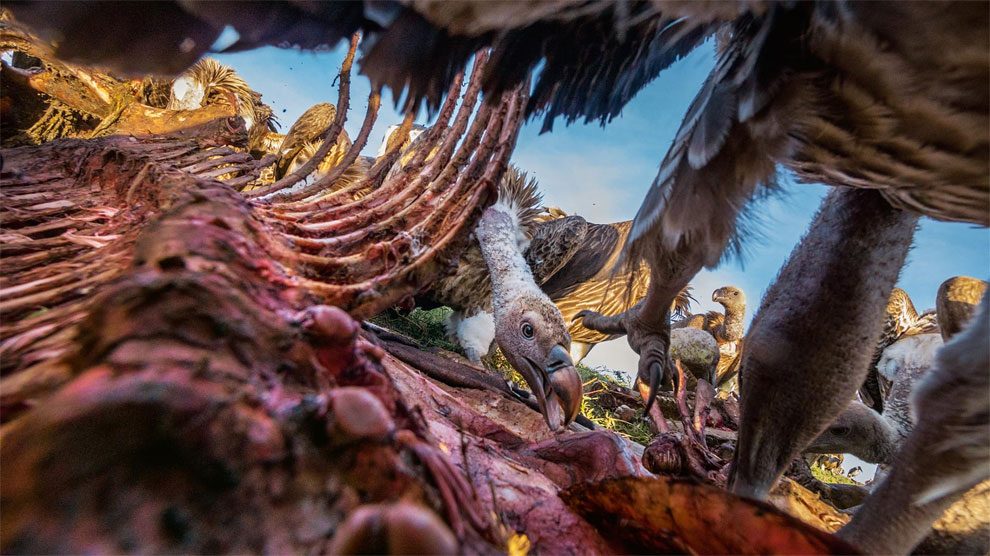
A young Rüppell’s vulture eats a piece of zebra in the Serengeti. More dominant birds have taken their fill of the choice meat, leaving the skin and bones for other birds. Photograph by Charlie Hamilton James
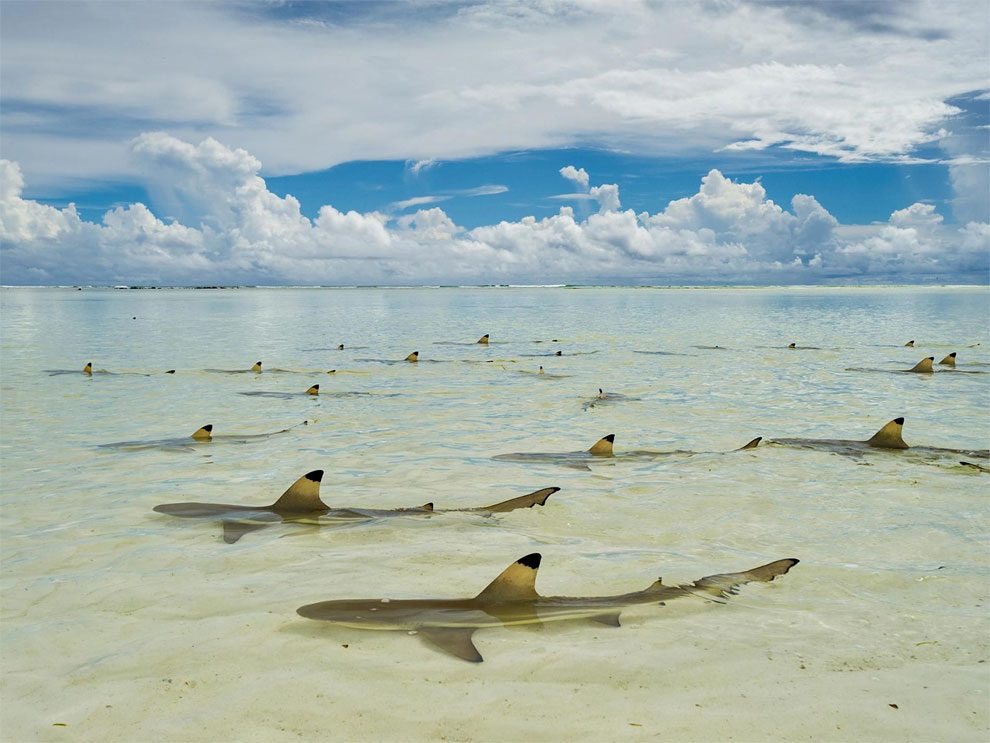
Lounging in inches of warm water, blacktip reef sharks wait for the tide to refill the lagoon at Seychelles’ Aldabra Atoll. Photograph by Thomas P. Peschak